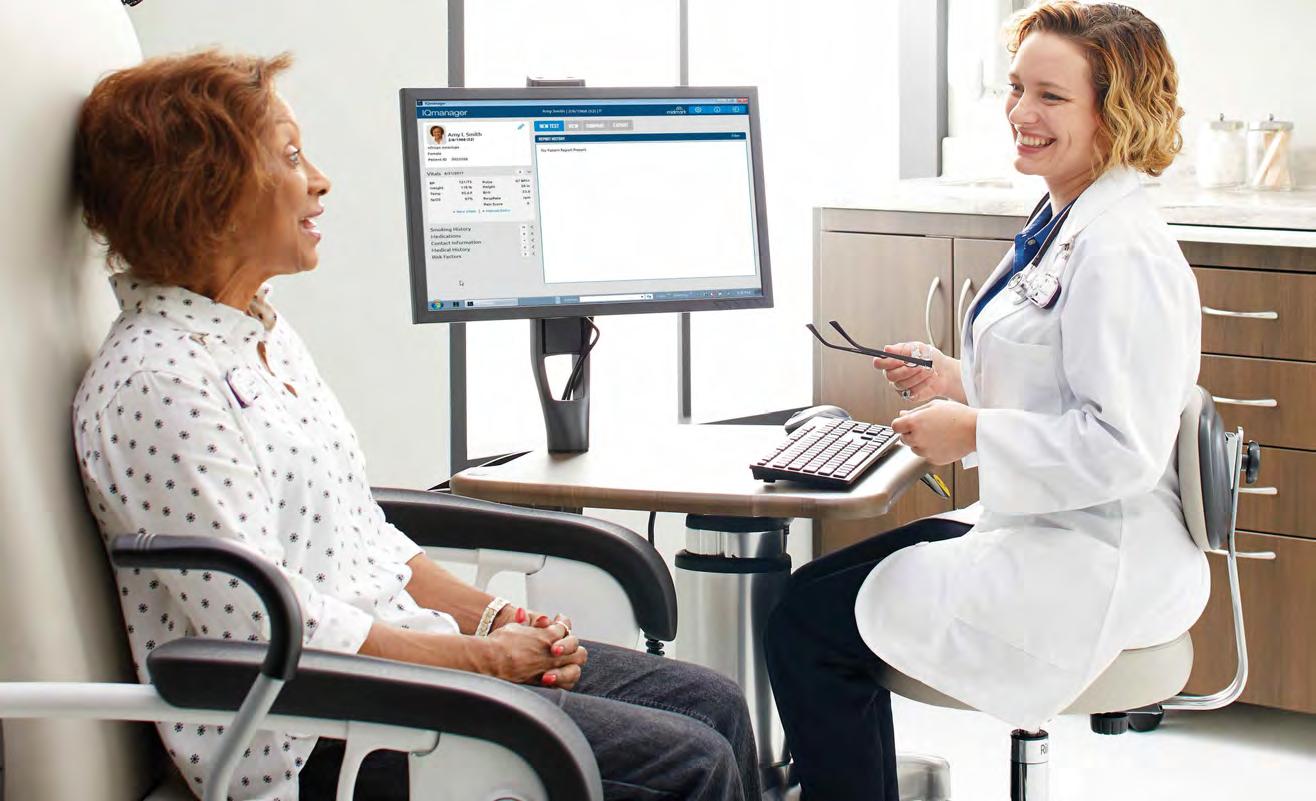Mixed Reviews for 2024 Physician Fee Schedule
Many primary care doctors applaud it. Specialty physicians? Not so much.





Many primary care doctors applaud it. Specialty physicians? Not so much.




As many of you know, after graduating from Liberty University, I got my “masters in sales” at Westside Toyota in Jacksonville, Florida. During my three years there, I learned countless sales lessons. One lesson was getting over your fears, which I will come back to in a bit. After leaving Westside, I was blessed to be hired by Doug Barrow and Bill Riddel at HealthLink, where we sold microbiology, lotions and potions – in other words, soaps and disinfectants.
My first six months were spent in the warehouse pulling orders and doing inventory every Friday. Each week I had to listen to a sales lesson on tape (yes, a cassette tape), and then on Tuesdays and Thursdays I would learn a product and have to sell it to Bill or Doug with an audience. It was in those sessions where I learned how to be jealous for my business.
This was a key message for Bill, one of the top three salespeople I’ve ever known. He wanted us to be jealous for our business, as well as the business of the distributor reps we worked with. He hammered this message home because we were in a category that’s often overlooked by sales reps. There isn’t much sexy about selling infection control, gloves, table paper, and other consumables. However, when we step back and add up what these categories equal to our annual sales, and how much of it we may be missing, that’s typically when we start getting jealous for our business.
Now back to the earlier lesson I mentioned, getting past our fears. The September 2023 issue focused on respiratory testing. Given the time of year, everyone will still be talking about it with practices and lab techs in the POL. This is a perfect time to get past your fear of the lab and start getting jealous for the business that is there, and the business that could be there, with a few questions and the help of a manufacturer reps. During AACC, I spoke with Peter Napoli and Mark Gnagy of Alfa Wassermann, and they made the comment that typically only 20% of reps will bring up a moderately complex instrument in a POL. Which prompted me to write this Publisher’s Letter. The best sales rep I’ve ever known (my mom) always said, “son, it’s ‘no’ until you ask.”
What are you waiting for? Asking a few questions could change your year.
Over the next few weeks remind yourself that you’re not an order taker – you’re a professional salesperson. Get jealous for all the business in your accounts, while overcoming your fears of the POL. Start a conversation, and then put your manufacturers to work. You will be amazed at not only how much your territory will grow, but also how good you feel closing business and bringing value to your accounts and suppliers.
Dedicated to the Industry, R. Scott Adams
editorial staff editor
Mark Thill mthill@sharemovingmedia.com
managing editor
Graham Garrison ggarrison@sharemovingmedia.com
editor-in-chief, Dail-eNews
Jenna Hughes jhughes@sharemovingmedia.com
art director
Brent Cashman bcashman@sharemovingmedia.com
circulation
Laura Gantert lgantert@sharemovingmedia.com
senior sales executive
Amy Cochran (West Coast) acochran@sharemovingmedia.com
(800) 536.5312 x5279
sales executive
Aili Casey (East Coast) acasey@sharemovingmedia.com
(404) 625-9156
publisher Scott Adams sadams@sharemovingmedia.com
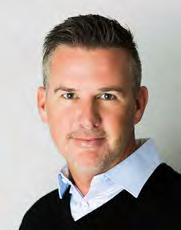
(800) 536.5312 x5256
founder Brian Taylor btaylor@sharemovingmedia.com
Subscriptions www.repertoiremag.com/subscribe or (800) 536-5312 x5259
Repertoire





Simplify sales season by arming yourself with facts –and focus – for what your customers need.
If you have not yet been inundated with information pertaining to this year’s respiratory testing season, I would be very surprised. Last month, Repertoire took on a broad view of the products, the market and a world of things you need to know. Since influenza testing really took off around 2005 or 2006, respiratory testing has been moving and changing rapidly. Rapid group A strep tests first launched to the market in the 1980s, but the market for a portfolio of rapid diagnostic tests did not really become a reality until influenza took off around 2005 or 2006. From there, the proliferation of new tests and new technologies has been an absolute blur. In this column I am neither going to review the technology and its changes in detail, nor do I intend to relate the history of rapid respiratory testing. Instead, I plan to discuss respiratory pathogen and vaccine trends I expect to see this season and ask us to focus on how we will deliver clinical and economic value and to which customers.
 By Jim Poggi
By Jim Poggi
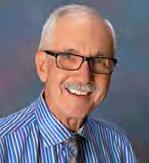
Let’s start with a review of common respiratory pathogens, their incidence and likely trends this season. As you might expect, it is too early to see an early fall increase in hospitalizations and positive test results. But there has been a fair bit of noise in the market and the news on a few fronts.

The latest COVID variant is EG.5 (sometimes referred to as Eris), an offshoot of the Omicron family. At press date it was the fastest growing COVID pathogen, accounting for about 17% of all new cases. The
good news is that this strain does not appear to carry a greater morbidity or mortality threat than any other recent COVID variants. So, while we can be confident infection incidence due to this variant will rise, at this time it does not look like a major public health threat. We can be equally confident that new COVID variants will continue to emerge as the season progresses.
Pfizer, Moderna and Novavax are all producing vaccines that will be available this fall which are expected to be effective against this variant. It is too early to know exactly HOW effective, but these
new vaccines are expected to be able to reduce hospitalizations and shorten duration of illness. All by itself, this should reduce the spread of COVID this season.
Current hospitalizations related to COVID are averaging 10,000 per week. For context, in their peaks in January 2021 and January 2022, they were 120,000 and 150,000 hospitalizations per week respectively. While it was not initially clear whether COVID would follow the seasonal pattern of other respiratory pathogens, it now appears that as it has declined from pandemic levels, it is showing every sign of becoming a seasonal pathogen, which will circulate concurrently with influenza, group A strep, RSV and others.
Influenza is also quiet as expected so far this year. Total reported tests are only about 26,000 per week, with less than 250 positive results as reported by the CDC. The dominant strains so far this year for flu A strains are H1N1 and H3N2, both of which have been prevalent in prior years. Flu A is somewhat more prevalent (58.8% to 41.2%) than flu B, which is typical of past seasons. We clearly expect the trend in infections and hospitalizations to sharply increase as the season progresses.
What about strep? Last season, strep peaked in February, with a 30% increase in cases compared to the prior year. This increase was the highest seen since 2017 perhaps due to relaxation of the isolation practices related to COVID in recent years. Clinicians are most likely to see children in the 4-8 age group with group A strep infections, followed by the 9-12 year old group. In a typical season, the infection rate varies from 5-8% in these groups. Despite
the significant concerns about viral pathogens, group A strep can have the most devastating complications on future health including rheumatic heart disease. It is readily treatable with conventional antibiotics as long as it is diagnosed early. Delayed diagnosis can lead to serious complications later in life.
RSV has been in the news for a couple of important reasons. While its incidence does not mirror the higher rates of other respiratory pathogens, it is particularly serious in children under one year of age. For this reason, it is advisable to use the highest sensitivity and specificity tests available to assure the lowest possibility of a false negative result. Molecular assays as a group have significantly reduced the incidence of false negative results and have raised the reported incidence statistics of RSV infection in the U.S. and worldwide. In past years, the elderly population has not been discussed as an RSV risk group. That has changed this year as two different vaccines have been approved by the CDC for adults over the age of 60. This has drawn attention to the higher risk of morbidity and mortality the elder adult population faces especially with respiratory infections. It also appears to be driving interest in RSV infections for all age groups.
Overall vaccine forecast for the coming season indicates that adoption of the COVID vaccine is likely to remain low, despite news articles discussing the new EG.5 variant. Without compelling data to indicate otherwise, I expect flu vaccine adoption to mirror prior years, somewhere in the 150-190 million dose range. With RSV it is too early to tell. There is insufficient public concern
at this time to cause me to believe there will be a lot of early adoption of the RSV vaccine. At this point, your best bet is to discuss what your customers are telling their patients and the response they are receiving. This grass roots information should indicate the direction of early adopters. Time will tell.
Infrastructure is now widely available to support this trend and IDNs in particular are supporting virtual visits actively. Mobility issues of the elder patient is also a compelling factor. While I am not sure what the trend line for acceptance will look like, it is not unreasonable to predict that virtual visits will match
Customer focus: Despite the substantial amount of interest in home testing during the COVID pandemic, I expect home testing to fall back for several reasons. Private insurance is no longer required to provide home COVID tests at no charge, and stay at home and travel restrictions based on the public health emergency have been lifted. As a result, patients are returning to the doctor’s office. The trends are clear. In the second quarter of 2020, during the height of the pandemic, 69% of patient visits were virtual according to a Harvard Business Review article. In a CDC study tracking virtual visit trends, they note a fall off in virtual visits during 2020 from 35.8% in April to 30.2% in June. I do expect remote visits for respiratory illnesses especially to remain somewhat above base line levels prior to the pandemic. As a long-term trend, I expect virtual visits to continue to gain patient acceptance and market share. There are sound economic and patient care rationales for this shift.
or surpass the number of in-office visits by the end of this decade.
Where does this leave the distribution account manager selling respiratory testing solutions? In my view, it means the savvy account manager will focus on securing his position with his current customers to support their in-office visits and patient testing first. Protect your current business first, and then look for new or re-captured office-based customers second. At the moment, focusing on the needs of offices providing direct patient care would seem to be where the respiratory testing needs are greatest. Selling EVERY solution in your impressive range of products and services to these customers is the recommended approach. Lab tests are key, but only one element of your impressive offerings. At the same time, the account manager should look for data on shifting visit trends using information from their home office, IDN sales team and key manufacturing partners.
For non-adopters of RSV tests, it pays to ask why and tailor your presentation along with your key lab manufacturers to explain how the improved technology assures better sensitivity and far fewer false negatives.


The clinical story of lab tests continues to favor adoption of molecular assays from several viewpoints. While lateral flow assays can be fast, and readers of lateral flow assays improve performance and reading objectivity, molecular provides the greatest clinical performance regarding sensitivity and relative independence from the need for a very good swab. As the news and noise level around RSV continues to grow this season, you are likely to find a number of customers asking for advice on how to optimize performance of their RSV assay.
In my experience, specific customers reluctant to adopt earlier technology for RSV due to concerns about false negatives are far likelier to listen to the story of testing RSV using a molecular platform. For non-adopters of RSV tests, it pays to ask why and tailor your presentation along with your key lab manufacturers to explain how the improved technology assures better sensitivity and far fewer false negatives. Using this presentation as a starting point can lead to a broader discussion of the entire respiratory lab portfolio and overall medical surgical spend. It makes sense to use this approach to refresh your discussions with many of your customers as respiratory season approaches.
Another bright spot as this respiratory season approaches is that further reductions in PAMA reimbursement cuts to the Clinical Lab Fee Schedule are suspended. While the SALSA act remains in congressional committee, no further cuts in lab reimbursement have been imposed in 2023. So, in addition to clinical value, lab testing at the point of care continues to make sense from an economic viewpoint. While the future of the SALSA act remains uncertain,
it would seem likely that some form of this legislation and protection of lab reimbursement from cuts that are believed to endanger access to care especially in rural areas is likely to pass congress ultimately.

In summary, as respiratory season prepares to unfold, we need to be prepared with facts at our disposal, open to the guidance and advice of both the home office and our key lab manufacturers and to remain focused on learning more about the concerns of our current customers in the face of the changing respiratory season landscape. Our customers have learned a great deal about prevention using previously available
vaccines for influenza and pneumonia. The trend for new vaccines against pathogens including COVID and RSV continues. Physician offices are becoming more aware of the need to isolate patients likely to spread respiratory infections from the rest of their patients. And, as the number and quality of lab tests continues to increase, our value as consultants continues to grow also.
Be armed with the facts, focus on the right customers, listen carefully to what they must share and work closely with your key lab manufacturers this season. Preparation is the path to success as respiratory seasons continue to change from year to year.

High pressure sales environments are not a new concept. Entire sales training courses have been built off the idea of a top-tier sales rep working against the odds. There are some who can thrive in high-pressure environments, but it’s generally not a sustainable way to operate. Businesses and sales representatives are facing an immense amount of pressure on all sides throughout each day.
Repertoire Magazine recently spoke to Michael Licenblat about what it takes to build a resilient sales team in the high-pressure sales environment that we have today. Licenblat is an expert in sales resilience – for 22 years he’s built pressure-proof teams that are designed to bounce back in tough and competitive markets. His organization, Bounce Back Fast, works to develop sales reps and the businesses that they work for into well-oiled machines built to withstand an enormous amount of pressure from challenging and dynamic environments.

It can be easy to look at resilience as simply the act of getting back up after getting knocked down. While that’s an important component to being resilient, Licenblat said “Resilience needs to be a high-performance tool, as opposed to a coping and well-being tool.”
Sales reps and organizations can leverage resilience as a thriving skill that keeps them relevant in a constantly changing marketplace. For Licenblat, this means sales reps need to be able to do more in less time, capture more market share, and recover quickly from any setbacks.
There are plenty of sales-specific strategies for building resilience in a sales environment. The specific nature of the strategy is important here – Licenblat argued that the generalization of “taking three deep breaths and going to a nice place in your mind” isn’t specific enough to help with sales performance. Creating optimism over outcome is far more important to the sales process than creating underperforming optimists. Sales reps need strategies that will help them to develop and build the right skillsets.
IDN, GPO, LTC, ASC... There Are So Many Acronyms in Healthcare -
MTMC is the one to know!

Why? It all starts with our professional, knowledgeable, and expansive sales team and market segment leaders that identify and expand on perfect sales opportunities in all major markets from coast to coast.
Licenblat said, “We need to abandon perfectionism. Whilst it’s great to aspire to always get it right, it is a more noble aspiration to bring out your best. The difference is between effort and outcome. If we aspire to focus more on effort as opposed to getting the perfect outcome, we create greater momentum.”
Business owners and operators are facing more pressures than ever before. In the wake of COVID-19, employees had greater expectations for the organizations they worked for. While in some ways that has created a better environment for both employees and businesses, it has created immense challenges for businesses. “Companies are losing good people – loyalty just isn’t there anymore,” Licenblat said.
Our team is the only acronym you need to know in healthcare sales. We are ready to deliver meaningful and immediate access to markets, driving sales growth and market relevance. Contact us today. The one to know. The one to grow.
One of the other ways that businesses can successfully navigate these pressures is by implementing Emotional Intelligence (EI), which can be as simple as changing your management tactics.
Despite the constant challenges and pressures facing sales reps in today’s market, there’s still plenty of room for high performers to excel. But what does a high performing sales rep look like these days? Based on a study conducted by some cognitive psychologists, Licenblat broke it down to four distinct qualities:
Motivation – “The people who decided to get up and engage their energy and deliberately get into more of a positive state to be able to feel a sense possibility were more effective at prospecting. They are getting out of their own way.”
Ability to set goals – “Those that set goals were about how many people they wanted to approach, how many calls they want to make, and how to measure success, they were more effective in their sales outcome that others that didn’t set goals.”
Trending phrases like “quiet quitting” have recently exploded due to the Great Resignation following the pandemic, wherein employees left their jobs to look for better, more flexible environments. One of the ways that Licenblat said that companies can navigate the new challenges and pressures of operating a business is in how they develop talent. Licenblat said, “Companies will need to develop their talent in specific areas where it’s going to make the most difference in their ability to make more approaches or conversions in what they are doing.”
One of the other ways that businesses can successfully navigate these pressures is by implementing Emotional Intelligence (EI), which can be as simple as changing your management tactics. Micro-managing your team is never going to get the best performance out of them – if you approach management like a coach, you can equip your team with the tools and skills they need to become self-reliant and bounce back when it gets tough.
“We are now seeing sales managers starting to develop their emotional understanding of what the best way they can support their teams is,” Licenblat said. “It’s not about riding them harder; it’s understanding what can drive engagement from your team. When we turn managers into coaches, we stop telling people what to do and we can draw out a higher level of performance.”
Sales has always been a high-pressure environment in one way or another. As the dynamic between the sales rep and the customer has changed, it’s up to the sales reps to shift
Time management – “It’s not just about time efficiency, it’s about valuing where your focus goes. Those that valued their time highly and didn’t spend it on low dollar productive activity had a higher dollar productive activity.”
Confidence – “40% of experienced salespeople experienced some aspect of reluctance and avoidance when going after new business. Sales reps need the confidence to get out of their own way, and those that didn’t allow themselves to dwell on their own negativity were much more effective.”
their approach to meet the customer where they are. This alone can create an immense amount of pressure for the sales teams to conform to the needs of the market.
This creates pressure for better performance from the sales, based on a set of KPIs and measurables that are often outside the control and scope of the sales rep. Licenblat said, “People are squeezed for margins and time. There is a constant need to impress upon the client and have a higher quality of customer service. That push to do more and be more is ever-present and a little more accelerated in the last couple of years.”
Energy and time are a dwindling resource for salespeople. When sales reps start to feel like they are spread too thin and don’t have enough time to manage all their ongoing projects, it starts to affect their performance –sales don’t close as fast as they should, prospects go cold, or even something as simple as administrative tasks slip through the cracks. He said, “One of the greatest pressures is the exposure to pushback, rejection, lack of interest, lack of timing – it’s very difficult for even the most experienced sales reps to not have some impact on their self-esteem and motivation.”
“When we turn managers into coaches, we stop telling people what to do and we can draw out a higher level of performance.”











More than 70% of admitted patients need peripheral IV catheters.1 Catheter securement is essential to help prevent motion-related IV complications.

B. Braun Medical’s Clik-FIX catheter securement devices are designed with patient care in mind. Made with a cushioning foam base, Clik-FIX is designed to maximize patient comfort and help reduce the risk of pressure injuries from the catheter hub.
To learn more about B. Braun Medical’s full line of Catheter Securement Devices, visit bbraunusa.com/clikfix.

While traveling with a medical device salesperson recently, we stopped by a surgery center to deliver a product presentation/demo. This rep has been selling for about 10 years and was very familiar with the surgery center environment. Prior to becoming a medical salesperson, this rep worked as a biomedical engineer in a hospital, so certainly had the “smarts” to add value to the customer.
You see, in our world of selling, while it’s crucial to know our product like the back of our hand and have our product, industry and clinical knowledge down pat, there’s something else that can really give us the edge: Emotional Intelligence (EI). It’s that secret sauce, the magic ingredient, that... well, you get the picture.
But here’s where things went south. After unwrapping cords for 10 minutes, trying to find a plugin, and passing out 20-page stack of brochures, this “seasoned pro” launched into a tirade of features, clinical data, and meaningless stats. After about 20 minutes, the physicians and office staff looked as if they were weighing the benefits of
running for the exit. But the worst part was, the salesperson was clueless to their body language and tone of voice. Needless to say, we didn’t get the order that day.
But we could have.
They had a need, and we had a great product. Yet this rep’s lack of awareness of what was happening in that room crushed the deal.
In simple terms, EI is being smart with feelings – yours and theirs. It’s about understanding when your client’s expression screams “bored” even if they’re nodding along. Or, EI is when to hold off pushing that premium package because you can tell they’re still on the fence. It’s the kind of intelligence that doesn’t care about your GPA or how long you “carried the bag,” but makes all the difference when getting prospects to open up and participate in an honest conversation.

You need to use your EI to read a prospect’s body language and tone. This can be the key to truly understanding their needs and reservations. Here are five tips to help you fine-tune your observational skills:
Serving US healthcare providers for over 30 years, Dukal offers solutions to protect and manage a comprehensive scope of wound care needs.
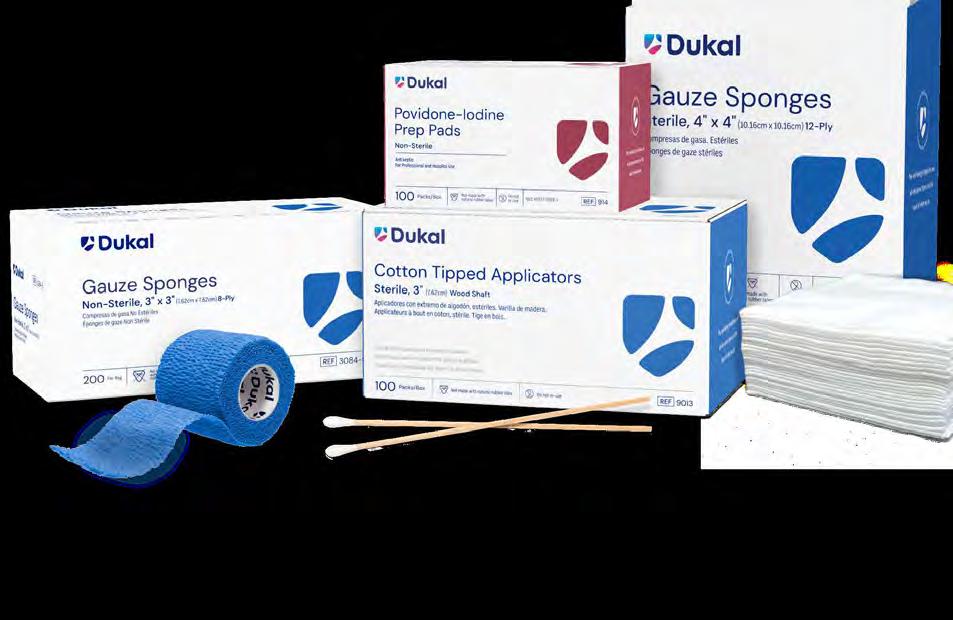
> Antiseptics & cleansing
> Applicators & swabs
> Bandages
> Burn care
> Casting
> Impregnated dressings
> Medical tapes & adhesives
> Small procedure kits
> Wound closure
> Wound dressings
Dukal is working with healthcare professionals around the world in manufacturing and supply chain solutions, to mitigate disruptions that impact business and patient health. Helping you manage everything from product to patient. Because when people have access to better health, they have access to a better future.

> Visit dukal.com to learn more
 Scan with your phone’s camera to view our wound care solutions.
Scan with your phone’s camera to view our wound care solutions.
Open vs. Closed Posture: If a prospect is leaning forward or has an open posture (uncrossed arms, uncrossed legs), they’re likely engaged and receptive. A closed posture (crossed arms, leaning back) can indicate defensiveness or skepticism. Adjust your approach accordingly to bridge any perceived barriers.
Facial Expressions: The eyes and mouth can be particularly revealing. Raised eyebrows can indicate surprise or skepticism, while a tightlipped smile might mean they’re holding back concerns. If they maintain eye contact, it’s usually a sign of interest; if they frequently look away, they might be distracted or disengaged.
Vocal Nuances: Listen for changes in tone, pitch, and pace. A higher pitch or faster pace can indicate excitement or nervousness, while a slower pace or lower tone might suggest hesitation or doubt. Be attuned to pauses; they might be pondering what you’ve said or are formulating a question.
Gestures and Movements: Fidgeting, such as tapping fingers, can suggest impatience or anxiety. On the other hand, mirroring your movements or gestures is a good sign, as it often means they’re in sync with you and the conversation.
Feedback Loops: Regularly check in with your prospect to ensure understanding. Phrases like, “Does that make sense?” or “How does that align with your needs?” not only
offer a chance for them to voice concerns but also present moments for you to observe their immediate physical and vocal reactions to your statements.
By honing in on these non-verbal cues, you can better tailor your presentations, address hidden concerns, and build a deeper rapport with prospects.

Handling Curveballs: Every now and then, a client throws a curveball –a tricky question, a sudden objection, or a not-so-happy complaint. Be prepared for it.
Making Choices on the Fly: Ever had one of those moments when you need to think on your feet? EI is like having those tiny decision-
Why EI is your new BFF in sales Building Real Connections: Look, products come and go, and let’s face it, what you’re selling today might be sold cheaper or jazzier tomorrow. But that rapport you build and the “feeling” customers get when they are around you can’t be replicated. Don’t listen to those “seasoned” salespeople who will tell you that relationships don’t matter in healthcare sales anymore. They do! When all things are equal, they WILL choose to do business with people they like.
making elves whispering sage advice in your ear.
Becoming a Listening Legend: We’ve all been guilty of waiting for our turn to speak rather than truly listening. But with EI, you’re not just hearing words; you’re catching feelings, concerns, and the unsaid. It’s almost like having superpowers, but cooler.
In a nutshell, while the world of sales spins with numbers, targets, and products, let’s not forget the heart of the matter – the human connection. Let’s value the laughs, the frowns, and those little moments of understanding. Emotional Intelligence isn’t just a buzzword; it’s the heart and soul of every successful sale. And on that note, here’s to more empathetic and genuine selling!
EI is being smart with feelings – yours and theirs. It’s about understanding when your client’s expression screams “bored” even if they’re nodding along.

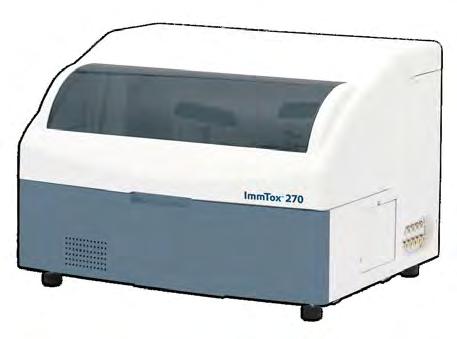


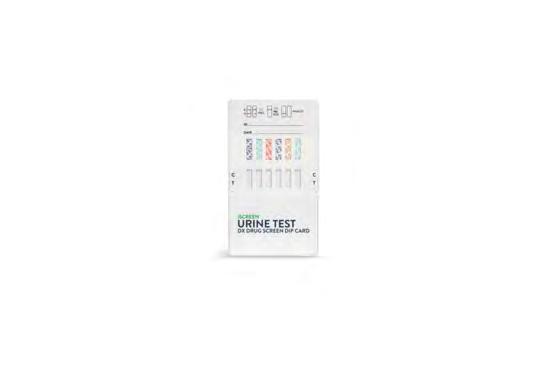
 By Lisa Earle McLeod
By Lisa Earle McLeod
Have you ever decided to buy a certain type of car? Let’s say you want a blue sedan. As you mull over your decision, you notice blue sedans everywhere. Did everyone get a blue sedan overnight? Probably not.
When you become more aware of something, you start seeing it more often. This brain pattern can be annoying if you haven’t intentionally put some guardrails on your mind.

Fighting with your spouse about dirty clothes on the floor? If you walk into your bedroom and there’s a ‘not quite dirty sweatshirt’ randomly sitting on the floor, it will be all you see. Making a proactive effort to eat healthier? You may have never noticed the huge array of chips at your mother-in-law’s house, but now it haunts you.
We (consciously or unconsciously) train our brains on what to look for and what to ignore. Our mental framework determines how much attention we pay to particular pieces of the world.
Think back to the hypothetical blue sedan. What if instead of being particularly conscious of blue sedans, you chose to be particularly conscious of moments of gratitude, joy, and connection?
When you make a proactive effort to notice these things, you’ll see more of them. For the rest of today, pick one of these categories to pay attention to:
I was working with an IT team at a major bank. We were talking about how they make a difference to their organization. One of the guys said, “No one ever notices us until something goes wrong.” It’s not just IT. It’s everything. Our brains gloss over all the times our takeout order is correct,
all the days we wake up without a stuffy nose or every person who uses their turn signal on the road. Training your brain to notice how often things are going ‘right’ helps the rough patches feel more insignificant. Statistically speaking, they are.
Did someone hold the door for you? Send you a funny meme? Even just give you a passing smile? These moments can be fleeting without a proactive effort to internalize them. You don’t need to spend minutes basking in the fact someone smiled at you; you’re likely way too busy for that. Just spend one second, as if you’re mentally checking off an item on your mental ‘to-do’ list.
This will feel awkward for the first couple of hours. Without an established lens, you’ll likely need to put forth some mental horsepower to tease out what you’re
When do you feel the space between your eyebrows soften and the corners of your mouth lift up? Is it when you take that first sip of coffee, hear a throwback song, or take off your shoes at the end of the day? Pay attention to it. Notice the joy in other people. A child at the store, a dog being let off the leash in the dog park, or your team laughing at a cheesy joke on Zoom. After a few hours, the world will appear more joyful. It was always there, now you’re noticing it.
looking for. By the end of one day, it will become easier. You’ll start to naturally notice things in the moment they happen, instead of consciously reminding yourself to look.
We see what we look for. If you’re searching for evidence that your boss is a jerk, your spouse is rude, or your career is off track … you’ll find it. If you’re searching for things to be grateful for, small moments of joy, and opportunities for connection, you’ll find those, too. Choose wisely, friend.
Lisa McLeod is the global expert on purpose-driven business. She is the author of five books, including her bestseller: Selling with Noble Purpose: How to Drive Revenue and Do Work That Makes You Proud. For more information, visit: mcleodandmore.com
We (consciously or unconsciously) train our brains on what to look for and what to ignore. Our mental framework determines how much attention we pay to particular pieces of the world.

Whole-person health has become an increasing priority for primary care physicians. Taking care of a patient in this way includes early diagnosis of chronic illnesses and disease management. Cardiovascular diseases are one chronic illness that can be diagnosed early when physicians perform clinical diagnostic testing on a regular basis. As the leading cause of death globally, according to the World Health Organization, 1 it is important to test early and often for cardiovascular diseases.
Primary care physicians can impact the early diagnosis of cardiovascular diseases by performing effective and non-invasive electrocardiogram (ECG) tests. ECGs can help physicians diagnose heart conditions including abnormal heart rhythms and coronary artery disease in a primary care setting.
In the United States, someone has a heart attack every 40 seconds. 2 Cardiovascular disease is America’s costliest disease. And, by 2035, direct medical costs of cardiovascular
diseases are projected to be at least $749 billion.3
In a recent Repertoire podcast interview, Brooke Griesdorn, Associate Marketing Manager at Midmark shared several reasons why ECG testing in primary care is important, including that as the U.S. population continues to age, the risks for cardiovascular disease and related deaths are expected to increase, along with the associated costs.4
“When you take into consideration all healthcare visits at all care
sites nationally, patients are visiting primary care offices more than 50% of the time compared to other sites of care,5” Griesdorn said. “This means that the majority of officebased care visits are being made to a primary care physician, who likely is the provider that patients are seeing most often.”
Cardiovascular diseases often go unnoticed until it is too late. When primary care physicians provide their patients with a whole-person approach to care and perform necessary diagnostic tests, early diagnosis is possible.
“Primary care providers are in an ideal position to diagnose heart disease early, which can help to drive down costs and improve a patient’s quality of life,” according to Griesdorn.
As healthcare providers prepare for an aging patient population, they must also be prepared for cardiovascular disease management. The first line of defense against cardiovascular disease is ECG testing. The test results are available within a matter of seconds, and ECG testing can help rule out unnecessary treatment or additional testing if a
patient’s symptoms aren’t related to cardiovascular disease.
The staggering statistics on cardiovascular diseases emphasize that everything that can be done should be done to test often and diagnose early.
The benefits of computer-based ECG testing within a primary healthcare setting include workflow efficiencies that enable staff to capture, review and edit test data all on one screen. Digital ECG workflows also allow data to be automatically imported into a patient’s electronic medical record (EMR), which helps to streamline the flow of data in the office. When cardiovascular data is integrated into the EMR, physicians can significantly reduce the steps required to capture, review and save patient tests. This eliminates the need for paper printouts and saves time due to the doctor’s ability to review ECG test results directly from their desk. When evaluating ECG results, electronic records are efficient and reduce transcription errors throughout the workday.

“If ECG testing is included in a primary care setting, physicians can positively impact clinical outcomes and create more favorable experiences for patients while also reducing the financial impact on their organizations and their patients,” said Griesdorn. “This allows for increased
Sources:
staff productivity and satisfaction by standardizing workflows.”
Midmark and other clinical equipment providers offer clinical training and education services onsite and virtually so that providers know how to use the technology efficiently and effectively to get the intended results.
“Each of us have the opportunity and responsibility in our conversations with buying committees as well as care teams to positively impact a critical component in diagnostic care,” said Griesdorn. “So, for each patient that
1. www.who.int/health-topics/cardiovascular-diseases#tab=tab_1
walks into the primary care setting, by making sure they have access and are being treated, the whole picture is getting looked at for them.”
Indeed, with cardiovascular health testing in place, primary care physicians will be able to educate their patients on preventive measures to reduce the risk of cardiovascular disease, improving outcomes in the process.
Editor’s note: Repertoire would like to thank Midmark for its assistance with this article.
2. www.cdc.gov/heartdisease/facts.htm#:~:text=In%20the%20United%20States%2C%20someone,heart%20attack%20every%2040%20 seconds.&text=Every%20year%2C%20about%20805%2C000%20people,States%20have%20a%20heart%20attack.&text=Of%20 these%2C,are%20a%20first%20heart%20attack
3. www.cdc.gov/nchs/fastats/leading-causes-of-death.htm
4. www.heart.org/-/media/Files/About-Us/Policy-Research/Fact-Sheets/Public-Health-Advocacy-and-Research/CVD-A-Costly-Burden-for-AmericaProjections-Through-2035.pdf
5. Impact of Change ®, 2020; HCUP National Inpatient Sample (NIS). Healthcare Cost and Utilization Project (HCUP) 2016. Agency for Healthcare Research and Quality, Rockville, MD; Proprietary Sg2 All-Payer Claims Data Set, 2018; The following 2018 CMS Limited Data Sets (LDS): Carrier, Denominator, Home Health Agency, Hospice, Outpatient, Skilled Nursing Facility, Claritas Pop-Facts ®, 2020; Sg2 Analysis, 2020. Confidential and Proprietary © 2020 Sg2
The staggering statistics on cardiovascular diseases emphasize that everything that can be done should be done to test often and diagnose early.
Surface wipes are a dynamic product sub-category within infection prevention. In 2022 the healthcare market was an estimated $566 million, and in 2023 it is growing by double digits. It has been an arms race recently with manufacturers improving their product lines each year with new formulations and better kill claims.

When looking into available options, some use the acronym S.A.F.E. as a guideline:
S – Simple, one product with the best combination of speed and efficacy.
A – Alcohol-free, alcohol is a good disinfectant, but does not clean surfaces well. Additionally, there are areas within facilities that don’t want access to alcohol in formulations.
F – Fast, the standard today has improved over the last few years and is now at 1 minute.
E – Effective, refers to how many pathogens the formulation kills.
There is no one surface wipe formulation that is right for all environments and situations, but the goal should be to reduce complexity. Each active ingredient has its strengths and weaknesses in areas of performance. Most facilities look at the following areas for review: Broad Disinfection, Cleaning Performance, Material Compatibility, Disinfection Time, and End User Safety.
Broad Disinfection refers to how many pathogens does the disinfectant kill. Quantity is important, but there are also specific pathogens
that are important to see on the label, Tuberculosis and C. Difficile are examples. Manufactures also test and list hard to kill pathogens in an effort to get an Emerging Pathogens claim. Products that contain hydrogen peroxide, bleach, or quaternary ammonium (quat) with high alcohol content are all broadspectrum disinfectants.
Cleaning Performance is an important part of the process. Surfaces need to be cleaned in order to be properly disinfected. Some active ingredients work better than others at cleaning. Bleach and hydrogen peroxide work well at cleaning, whereas formulations with high alcohol do not perform as well.
Material Compatibility is important to facilities. Repeated cleaning and disinfecting wear on certain materials. Performance also differs between hard and soft surfaces. Quat with low-alcohol content tends to be easiest on surfaces. It’s best to refer to equipment and furniture manufacturers’ recommendations.
Disinfection Time has come down in recent years and is important for productivity. Keep in mind that you can’t be selective with kill times. The highest time listed on the label is the disinfection time for the wipe. Quats with high-alcohol content or hydrogen peroxide wipes usually perform well with disinfection times.

End User Safety is important to both the clinician and patient. There are formulations that are more caustic than others and need to be handled carefully. Formulations with high alcohol content are not recommended or have been eliminated from some facilities where they wanted limited access from specific patient populations. Behavioral health, long-term care, and correctional facilities are a few examples of these areas.
As always, there is a great opportunity to review what your customers are using and provide some needed guidance. Lean in, remove complexity, partner with one of your infection prevention suppliers to build your business and close out a successful 2023.

Metrex’s portfolio of surface disinfection wipes to bring value to your customers and help you clean up.

Many primary care doctors applaud it. Specialty physicians? Not so much.
Chances are, your physician customers are talking about the 2024 Medicare Physician Fee Schedule proposed rules, published in July by the Centers for Medicare and Medicaid Services. Under the proposal, physicians would see a decrease to the conversion factor of 3.36% on Jan. 1, 2024, going from $33.8872 to $32.7476.
That’s bad news for many physicians. But primary care doctors detect a glimmer of hope in the 2024 Fee Schedule – the proposed addition of add-on code G2211 to HCPCS, intended to better recognize the time and labor associated with longitudinal care of complex patients.
An overall cut exceeding 3% was bound to generate complaints from the medical community. And it did.
The American Society of Anesthesiologists: “The proposed rule underscores how the Medicare payment system is broken, especially during a time when anesthesia groups are faced with continued inflation pressures.”
The American Medical Association: “The Centers for Medicare & Medicaid Services proposal is a critical reminder that patients and physicians desperately need Congress to develop a permanent solution that addresses the financial instability and threatens access to care.”
The American College of Cardiology:
“[The proposal] fails to account for significant inflation in practice costs, creates long-term financial instability in the Medicare physician payment system, threatening patient
access to Medicare-participating physicians and services.”
The American College of Obstetricians and Gynecologists: “For the physicians who provide care to beneficiaries of Medicaid, this translates to lower payment, which does not cover the cost of providing care. It also puts further strain on practices recovering from the COVID-19 public health emergency and ongoing increases to practice-related expenses that are not immune to inflationary rises.”
Primary care groups had some issues with the proposal as well.
“While Congress enacted limited conversion factor relief for 2024, physicians still face untenable cuts, which could threaten practice stability and create barriers to care for beneficiaries,” said Tochi Iroku-Malize, MD, MPH, MBA, FAAFP, president of the American Academy of Family Physicians.
That said, AAFP and some other societies voiced their support for the G2211 add-on. “G2211 is an incremental but meaningful step toward more appropriately valuing and paying for primary care, which will bolster the primary care workforce and protect patients’ continued access to timely
care,” Dr. Iroku-Malize told Repertoire. “The G2211 code is a direct investment in these proven services.”
What is G2211?
CMSspeak for G2211 reads like this: “Visit complexity inherent to evaluation and management associated with medical care services that serve as the continuing focal point for all needed health care services and/or with medical care services that are part of ongoing care related to a patient’s single, serious, or complex condition.”
The American College of Cardiology describes it in simpler terms: “G2211 would generally be applicable to outpatient office visits as an additional payment, recognizing the costs clinicians may incur when longitudinally treating a patient’s single, serious or complex chronic condition.”
The add-on had been scheduled to be implemented in 2021, but Congress delayed it for three years because of its potential cost to Medicare. However, CMS has since decided that the add-on will improve the accuracy of payment for primary and longitudinal care without endangering the financial health of Medicare and should be implemented on Jan. 1, 2024.
The proposed rule – released on July 13 – had a 60-day comment
Several telehealth-related provisions would remain in effect until Dec. 31, 2024, if the proposed 2024 Physician Fee Schedule is enacted, including:
Temporary expansion of the scope of originating sites for services furnished via telehealth to include any site in the United States where the beneficiary is located at the time of the telehealth service, including an individual’s home.
Expansion of the definition of telehealth practitioners to include qualified occupational therapists, qualified physical therapists, qualified
speech-language pathologists, and qualified audiologists.
Continued payment for telehealth services furnished by rural health clinics and Federally Qualified Health Centers using the methodology established for those telehealth services during the Public Health Emergency.
Delaying the requirement for an in-person visit with the physician or
period. Final regulations were expected to be issued around Nov. 1.
Some specialties object to the add-on because of a provision in the Physician Fee Schedule known as “budget neutrality.” If the Centers for Medicare & Medicaid Services projects that net pricing changes for existing services will result in boosting Medicare spending by more than $20 million, the agency must reduce spending elsewhere. Simply put, as more money is allocated to one sector of the medical community, less is allocated to others.
For that reason, there is a chance Congress may once again postpone implementation of the G2211 add-on, as it did three years ago, says coding expert Betsy Nicoletti, MS, CPC, president of Medical Practice Consulting. “Hopefully that won’t happen, but I’m not getting my hopes up.”
“Historically, the Medicare physician fee schedule has devalued primary care and other cognitive services as many new procedural codes with higher values were added,” says Dr. Iroku-Malize. “This devaluation has led to lower compensation for cognitive care physicians despite the vital role they play in managing chronic conditions and coordinating patient care across a large team. As a result, the interest in pursuing primary care and other cognitive specialties has declined, exacerbating physician shortages in rural and other underserved areas across the nation.
“Recent efforts by CMS have begun to help address this historic undervaluation of primary care, but evidence continues to indicate that primary care office visits are
practitioner within six months prior to initiating mental health telehealth services, and again at subsequent intervals as the Secretary determines appropriate.
Coverage and payment of telehealth services included on the Medicare Telehealth Services List (cms.gov/Medicare/MedicareGeneral-Information/Telehealth/ Telehealth-Codes) until Dec. 31, 2024.
often more complex than other specialties,” she says. “The existing process for valuing physician services fails to take these complexities into account.”
In a joint letter to legislative leaders in Washington, the American Academy of Family Physicians and the American College of Physicians urged Congress to support full implementation of G2211. “In short, the implementation of G2211 is long overdue, necessary, and will ultimately ensure the Medicare program provides patients with timely access to longitudinal, comprehensive, coordinated, whole-person care,” they wrote, adding:
G2211 will help promote beneficiaries’ timely access to primary care and other continuous services that promote better health care outcomes and help reduce spending.
G2211 will advance more appropriate payments for primary care and other longitudinal, continuous care under the Medicare Physician Fee Schedule.
By advancing fair and accurate payment in Medicare, G2211 will help sustain primary care and other physician practices Medicare beneficiaries rely on and bolster the physician workforce.
Other professional societies and organizations had a more mixed view of the add-on. “ACOG is in agreement with several other surgical organizations highlighting concerns around the practicality and necessity of G2211,” says Lisa Satterfield, senior director of health and payment policy, and Erin Alston, health policy
Respiratory infection season will be here soon, so accurately diagnosing our friends Sniff, Spike and Streppy here can be a challenge—which is why rapid tests have many advantages, including appropriate use of medications, fast results and improved efficiencies.


Your customers also save money with our unique QC Inside® feature; two extra tests for external QC at no charge.
Be prepared with the OSOM® COVID-19 Antigen Rapid Test, OSOM® Ultra Plus Flu A&B Test, and OSOM® Ultra Strep A Test.
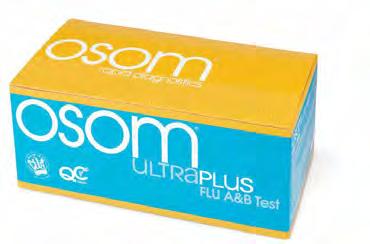
 Sniff
Streppy
Spike
Sniff
Streppy
Spike
manager at the American College of Obstetricians and Gynecologists. “Implementation of this add-on code would inappropriately result in overpayment for certain evaluation and management services, which will ultimately put even more downward pressure on reimbursement rates due to the nature of budget neutrality requirements under the physician fee schedule.”
Claire Ernst, JD, director of government affairs for the Medical Group Management Association, says that MGMA supports the intent behind the G2211 complexity code, “but Congress must go back to the drawing board to reevaluate budget neutrality requirements. Budget neutrality has consequences that surpass primary care services; any meaningful change to the Physician Fee Schedule will generally trigger across-the-board cuts, making it difficult to implement much-needed policies.
One provision in the Physician Fee Schedule continues to draw the ire of many physicians, sometimes pitting physician groups against each other. “Budget neutrality” means that if the Centers for Medicare & Medicaid Services projects that net pricing changes for existing services will boost Medicare spending by more than $20 million, the agency must reduce spending elsewhere.
“The structure and reality of budget neutrality has created a system in which medical specialties are forced to weigh the impact of every action, whether imposed by Congress or CMS, or self-selected through the AMA CPT and RUC process,” say Lisa Satterfield, senior director of health and payment policy, and Erin Alston, health policy manager, American College of Obstetricians and Gynecologists.
“Medicine is an inherently interdisciplinary field and patients often require services from a multitude of specialists for single conditions. Continued decreases in physician reimbursement is detrimental to all medical specialties and work should be done to ‘make physicians whole’ in regard to payment. While news of increases in hospital
“Medical groups continue to face challenges stemming from inflation and increasing administrative costs, such as prior authorization requirements,” she says. “Physician practices may have to make difficult decisions regarding practice operations to keep the doors open such as limiting the number of new Medicare patients, reducing charity care, and closing satellite locations.”
Without preparation, many physicians may not know how to apply the add-code by Jan. 1, says Betsy Nicoletti. For that reason, she advises primary care physicians and other specialists – including psychiatrists, rheumatologists and other physicians with longitudinal patient relationships – to start preparing today by identifying patient encounters that would merit G2211. CMS estimates the add-on might ultimately be used on up to 54% of claims, but Nicoletti thinks that estimate is low.
reimbursement is widely published, the strain of budget neutrality for physicians and other healthcare professions places the entire systems at odds.”
Says Tochi Iroku-Malize, MD, MPH, MBA, FAAFP, president of the American Academy of Family Physicians, “The current Medicare physician payment system pits medical specialties against one another as payment rates become increasingly inadequate and physician practices struggle to stay afloat. That’s why Medicare physician payment reform is needed. This includes an annual inflationary update to help ensure physician payment rates keep pace with rising practice costs. Congress must also address Medicare budget-neutrality requirements, which make it harder to compensate physicians appropriately for the life-saving services they provide.”
The American Medical Association supports a bill introduced in Congress this spring that would tie the Medicare physician payment schedule to the Medicare Economic Index. “By instituting an annual inflation-based update, the legislation would put physicians on equal footing with virtually all
other health professionals and organizations paid by Medicare,” according to AMA, adding that physician payment rates have been subject to a six-year payment freeze that will last until 2026.
And in a statement in July, Anders Gilberg, senior vice president of government affairs for the Medical Group Management Association, said the proposed 2024 Medicare Physician Fee Schedule “raises significant concerns for medical groups related to its 3.4% reduction to the conversion factor, which further increases the gap between physician practice expenses and Medicare reimbursement rates. The G2211 add-on code for complex patients “highlights CMS’ flawed approach to addressing inadequate Medicare payments for primary care services using a budget neutral methodology,” he added.
“Congress must reexamine existing law to provide an annual physician payment update commensurate with inflation and do away with Medicare’s ‘robbing Peter to pay Paul’ budget neutrality requirements to provide muchneeded financial stability for medical practices,” he said.


It’s a staple of every doctor’s visit. Whether it’s a primary care physician, eye doctor, or dentist, someone will be on hand to take a patient’s blood pressure. Yet there is a significant population of patients that aren’t getting proper blood pressure measurements due to improper timing, tools, and/or technique from the provider. For physicians looking to improve the accuracy and workflow of collecting patient vitals, switching from manual tools to digital tools will allow them to streamline workflows and improve patient care.
As cases of hypertension continue to rise in both adult and pediatric patients, it’s more important than ever to get accurate blood pressure measurements for the patient. In addition to recording inaccurate blood pressure readings, taking manual blood pressure measurements can impact the physician workflow. When it comes to proper blood pressure measurement technique, timing is everything. According to the American Heart Association (AHA) guidelines, it is recommended that clinicians should average several readings, with rest periods in between, and repeat over 2-3 office visits.1,2 This is a significant challenge for patient care in a time where staffing shortages create a strain on an already challenging healthcare environment, which can lead to further misdiagnosis and inadequate treatment for the patient.
The COVID-19 pandemic demonstrated the importance of measuring vital signs like temperature, oxygen saturation, and blood pressure to get a better picture of the health of the patient. While there are obvious benefits and improvements to patient
care workflow efficiency, it is also much more cost effective and accurate for the practitioner to measure the necessary vitals at one time with one automated device.
There are plenty of factors to consider when taking vitals like blood pressure. For many, blood pressure can be elevated just by walking into a doctor’s office – a phenomenon called “white coat hypertension,” which affects up to 35% of patients.1,3 Even if the patient isn’t experiencing white coat hypertension, they can trip up their vitals simply by talking to another person, not resting for a few minutes, or if the cuff is not the right size.
Clinician error is another huge factor here, especially in the wake of staffing shortages and high levels of burnout in the healthcare industry, but accurate blood pressure measurement requires proper technique. Clinicians have a full plate when it comes to patient care, and something as routine as measuring blood pressure can be left to the wayside for patients that have other needs. Technique is still necessary in accurate measurement, which is why the simplicity of implementing a digital tool can have such an impact.
There are two main components for accurately measuring blood pressure in a modern outpatient

office – automated blood pressure devices and averaging measurements. Using oscillometric devices, or automated blood pressure, physicians can take an accurate blood pressure measurement and reduce human error associated with instruments like stethoscopes. When physicians use these devices and average out several blood pressure readings, it increases the probability for a much more accurate blood pressure reading while following AHA recommendations.
One of the challenges that physicians are facing in diagnosing hypertension and high blood pressure is in the way that this data is being collected. The majority of outpatient offices are still using manual blood pressure cuffs, and one study shows that 95.1% of patients during the manual measurement period only had one blood pressure reading – potentially leading to inaccurate results or a misdiagnosis of hypertension. 4
Finding the right solution is a critical part of this equation. Devices like the Welch Allyn Spot Vital Signs
4400 device and Connex Spot Monitor provide an all-in-one automated vitals solution that have been proven
to take accurate vitals measurements. Both devices are also capable of taking multiple blood pressure readings and averaging them to obtain the most accurate blood pressure measurement per the American Heart Association guidelines. And the option of connectivity with a facility’s EMR (Electronic Medical Record), further helps to ensure the vitals documentation process is simple, fast and accurate.
The difference between an automatic and manual tool for reading patient vitals is significant. In addition to saving time, digital tools can include features to help support the diagnosis and treatment decisions of the physician.
One of the main hurdles for an investment in digital tools is the price point. It can be hard to justify what might seem like an unnecessary expenditure – especially when the manual tools have been used for so long. This mentality of “if it isn’t broken, don’t fix it” is an easy trap for healthcare organizations that are looking to cut costs wherever possible as well as the time and energy in reworking an existing workflow.
As distributor representatives, you can point out that blood pressure measurements are far too important to let a higher price point dictate this
Baxter, Connex, Hillrom, Spot Vital Signs are trademarks of Baxter International Inc. US-FLC157-230040 v2
Sources:
decision for providers. In fact, studies have shown that the time these devices save physicians can save them money in the long run. Baxter conducted a study5 that found that the average medical assistant cost of measuring a single blood pressure using a manual tool was $0.35, while the cost for a digital tool was $0.24 –a savings of $0.11 per reading. Once the medical assistant mastered using the digital tool, the savings jumped to $0.17 per reading. While saving $0.17 might not seem like very much, it can add up for a typical primary care practice. Using a digital tool can result in about $1,000 in savings per year using a Welch Allyn digital blood pressure measuring device.6
At a time when primary care is facing challenges at every level of every visit, it’s hard to ignore the implications of saving providers time and money, while also drastically improving their patient care processes. With the right timing, tools, and technique any practice can manage this chronic disease that impacts almost half of the U.S. adult population.
Editor’s note: Repertoire would like to thank Baxter for its contribution to this article. Learn more about the topic at hillrom.com/hypertension or call a Baxter representative today.
1. Whelton PK, Carey RM, Aronow WS, et al. 2017 ACC/AHA/AAPA/ABC/ACPM/AGS/APhA/ASH/ASPC/NMA/PCA Guideline for the prevention, detection, evaluation, and management of high blood pressure in adults: a report of the American College of Cardiology/American Heart Association Task Force on Clinical Practice Guidelines. J Am Coll Cardiol 2018; 71: e127-248. DOI: 10.1016/j.jacc.2017.11.006
2. Muntner P, Shimbo D, Carey RM, et al. Measurement of blood pressure in humans. A scientific statement from the American Heart Association. Hypertension 2019; 73: e35-e66. DOI: 10.1161/HYP.0000000000000087
3. Gorostidi M, Vinyoles E, Banegas JR, de la Sierra A. Prevalence of white-coat and masked hypertension in national and international registries. Hypertens Res 2015; 38: 1-7. DOI: 10.1038/hr.2014.149
4. Kottke TE, Anderson JP, Zillhardt JD, et al. Association of an Automated Blood Pressure Measurement Quality Improvement Program With Terminal Digit Preference and Recorded Mean Blood Pressure in 11 Clinics. JAMA Netw Open. 2022;5(8):e2229098. doi:10.1001/jamanetworkopen.2022.29098
5. Yarows SA. What is the Cost of Measuring a Blood Pressure? Ann Clin Hypertens. 2018; 2: 059-066. DOI: 10.29328/journal.ach.1001012
6. Welch Allyn. Vital Considerations: Automatic Blood Pressure Devices Can Deliver Long-Term Benefits in Primary Care. 2020.
Overall inflation has slowed down, but equipment costs aren’t budging.
Last year, the annual inflation rate in the United States peaked at just over 9%, highest in over 40 years. By July 2023, it had fallen to 3.3%. But continued inflationary pressure on raw materials, transportation, warehousing and wages have kept capital equipment prices about the same. This fall, as customers scrutinize their capital budgets, sales representatives can expect some tough questions. In response, reps should spell out the broad economic factors affecting capital equipment pricing today and then guide their customers toward solutions that can lead to lower life cycle costs, according to those with whom Repertoire spoke.


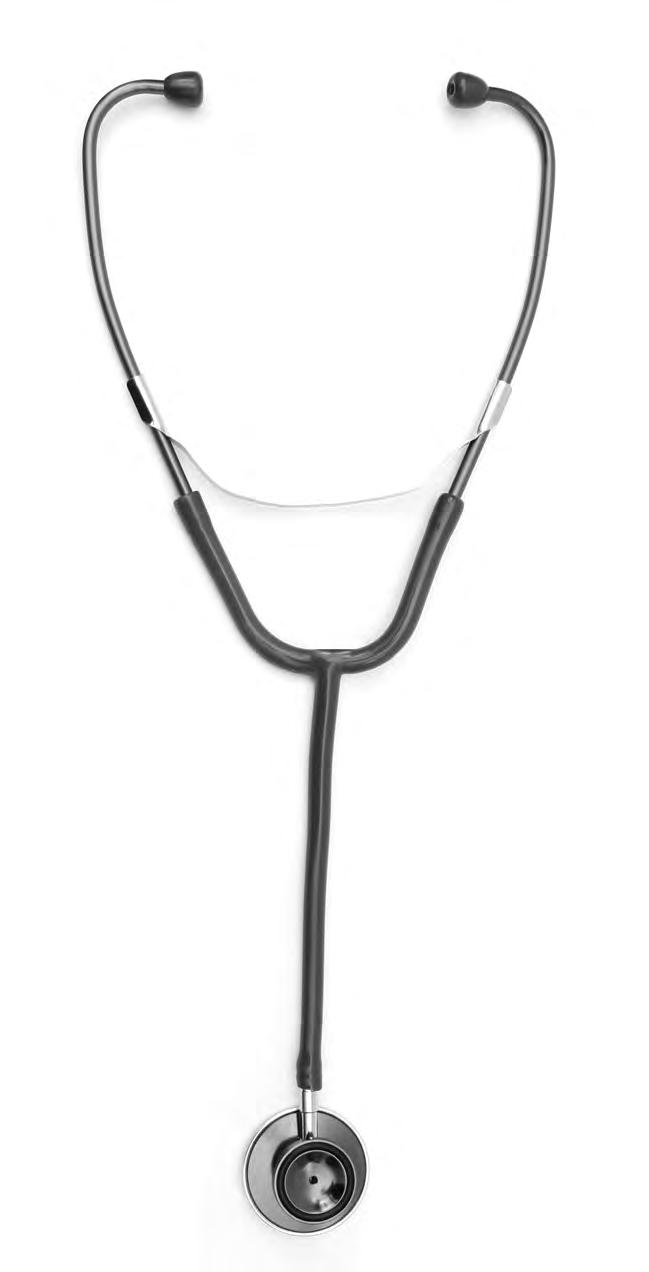





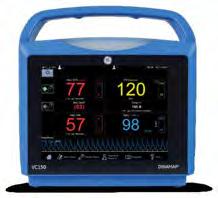


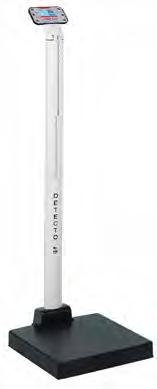
“Inflation is still a factor,” says Cindy Juhas, chief strategy officer, CME Corp., Warwick, Rhode Island. “Price increases have leveled off the last eight months but were hefty prior to this calendar year.” Manufacturers attribute rising prices to increases in raw material costs, such as steel or computer chips. Stainless steel shelving units, power exam tables and refrigerators are just a few types of equipment to be affected. Freight remains a hidden cost, she says. In some cases, CME is charged almost as much for freight as for the cost of the equipment itself. Price increases also reflect an increase in labor costs.
“Between labor costs remaining high, the need to source more materials domestically, and the need to keep higher parts inventories, there appears to be no justification to lower costs” on the part of vendors, says Juhas. “We have had to pass all price increases on to the customer, since our own operational costs have gone up. Customers aren’t happy, but if they need the equipment, they have to purchase it.”
Jack Moran, managing partner of MTMC, an independent sales representation firm, says that equipment vendors have experienced higher costs on their components and shipping, while those that are less dependent on sourcing parts have felt less pain. “The other very big issue we are seeing is that high interest rates have caused many delays and cancellations in new construction projects. This is hurting sales of new equipment more than higher costs.”
Rebecca Gayden, vice president and general manager, capital equipment solutions for Vizient, the Irving, Texas-based GPO, says that overall inflation slowed down during the first half of 2023, but Vizient
anticipates another cycle of inflation to begin this fall or in 2024.
There have been significant price increases in many raw materials, contributing to inflation in medical capital equipment, she says. “We are seeing less of an impact on complex medical capital equipment, such as diagnostic imaging, as many suppliers are offering spot-buy opportunities on equipment components to mitigate overall cost.” Other products such as exam room equipment, which are made primarily of steel and don’t break down into separate components, are having a greater impact on provider costs, as rolled steel is up 61% since January 2020, she adds.

Another inflationary factor is the cost of labor, says Gayden. “Over the last two years labor costs have surged in manufacturing and freight as industries struggle to retain and attract workers. Labor costs remain a significant pressure and are often cited by manufacturers as reason for a price increase.”
Leslie Van Alstyne, director, capital guide-supply chain solutions, ECRI, a Plymouth Meeting, Pennsylvaniabased healthcare technology and safety company, says ECRI has not noticed a decline in capital purchasing or any consistent messaging that inflation is contributing to a decrease in capital purchase spending. “We believe this is because healthcare
‘
B etween labor costs remaining high, the need to source more materials domestically, and the need to keep higher parts inventories, there appears to be no justification to lower costs.’
In the last year, price increases became essential for many medical technology companies to ensure their economic viability, writes Michael Marquardt, associate partner with Prof. Roll & Pastuch, a management consultancy in Germany, in a recent issue of MedTech Intelligence. However, many leaders now realize that their companies were not optimally prepared for the implementation of such price adjustments. That includes salespeople. Marquardt offers some tips.
“When the time has come for a price adjustment, this must be clearly communicated internally,” he writes. “It is also important for management to show that it stands behind the sales department. The sales team should be clearly instructed that the sales focus is on profitability and which segments (unprofitable) sales may be given up if necessary.
“In the event of escalation on the part of the customer, it is important to stand behind the sales department. Signaling the customer that they only need to move higher up in the hierarchy to get a better price will undermine your sales team and implementation of the price increase.
“For many sales employees, price negotiations are unpleasant. This is precisely why they require dedicated preparation,” writes Marquardt. “If the sales department stumbles during customer contact, the implementation of a price adjustment is quickly put in jeopardy. Typical customer queries and useful argumentation chains must therefore be clarified in advance.
“It can be helpful to show the customer what efforts are being made to reduce the increased costs, for example through innovations in production. It should also be communicated how the solution will help them optimize their internal costs, for example through faster ROI.”
Read the article “Implementing MedTech Price Increases in Times of Inflation and EU MDR” in MedTech Intelligence at www.medtechintelligence.com/feature_article/implementing-medtech-price-increases-in-times-of-inflation-and-eu-mdr.
facilities, especially smaller ones, had already been limiting capital purchases to essential equipment because of the pandemic. So, we’re seeing essential purchases, such as replacement equipment, continue despite higher costs.”
If lower purchase prices for capital equipment aren’t on the table, distributors, providers and third parties are pursuing alternative strategies to keep a check on capital equipment spending.
Juhas says that some CME customers are investing in equipment and technology that will make them more efficient and cost-effective, while others are just holding on to their current equipment. “We are seeing more requests for biomedical-certified refurbished equipment,” she says. In addition, customers are much more willing to look at alternates in the current
climate, she adds. “If a customer is willing to look at alternatives, we will show them less expensive products. Our goal is to sell value, that is, the best equipment at the best price so that they will save money over time.”
Van Alstyne says that ECRI has been able to identify cost-savings opportunities for its members despite inflationary price increases. “In many cases, savings are based on negotiating larger discounts on options, accessories and service contracts, and requesting warranty extensions.
“We have noticed a slight increase in requests to analyze stand-alone service contract agreements for our members,” she adds. “This could be a reflection of efforts to extend the use of capital medical equipment past its typical expected service life due to budgetary constraints and concerns related to component shortages and longer lead times for equipment delivery.”
Says Gayden, “Vizient has always focused on the total cost of ownership when negotiating national agreements with terms and conditions to protect providers, such as product acceptance, failure to supply, warranty and point of sale service. We also provide consulting services around equipment planning and capital asset management. Through capital asset management, we enable providers with data to evaluate their current fleet, including utilization, to ensure they are only buying what they need when they need it.
“We see suppliers looking for longer term commitments from providers in exchange for value,” she continues. “Additionally, some suppliers with broad portfolios combine multiple categories to drive value, such as coupling medical capital equipment with consumables. These types of arrangements typically come with high commitment levels and longer terms.”

Consistent visits to your primary care physician are the foundation of a preventive care regime, but what happens if there are no primary care physicians? Though the COVID-19 has mostly subsided in the last year or so, resources and personnel are still dwindling for the primary care space.
A study conducted earlier this year by Axios found that graduating medical students are not moving towards primary care, even with an increase in applicants to schools and further congressional efforts to increase residency slots. According to this data, many residents are moving towards higher-paying specialties in lieu of primary care, which could leave gaps in care for patients across the country.
This is a trend that experts have seen coming for a number of years, especially in the wake of COVID19. A smaller percentage of physicians are entering the field than are currently practicing, and after seeing how healthcare took the brunt of a lot of challenges on the chin throughout the height of the pandemic, it’s no wonder that fewer people are entering the workforce.
As primary care continues to shrink across the country, healthcare organizations are looking at ways to better invest in primary care to ensure that there is no lapse in the healthcare continuum. First and foremost, these organizations need to understand the challenges facing patients and providers in the primary care setting.
According to the National Association of Community Health Centers, over 100 million Americans are facing barriers to access primary care. That gap in access to primary care can result in serious health issues for those affected, and potentially even greater public health threats. The pandemic revealed flaws and holes in the healthcare system that always existed but might not have been evident without a significant disruption. Because of that disruption, the healthcare industry faltered
and stumbled through a challenging period where the patients far outnumbered the healthcare staff. Additionally, the pandemic highlighted the need for preventive care – another big pressure point, many patients opted out of their typical primary care visits due to office closures or fear of getting sick from visiting the doctor. Primary care providers are typically the first line of defense for diagnosing and treating infectious diseases in vulnerable populations. Primary care physicians have only increased in value and scarcity since the onset of COVID-19.
always going where they are needed most. In these medically underserved areas, the report says that “the number of primary care doctors has been stagnant for the last eight years.”
Graduating medical school students are showing a preference towards specialty residency programs over primary care positions. Donna Lamb, director of the National Resident Matching Program, said to Axios, “We’re seeing the same thing year over year, which is that the more specialized areas of medicine are not seeing a decline in applications or interest, but the primary care
With fewer residents going to primary care settings (and perpetual burnout and staffing shortages that the whole industry is dealing with), it exposes this greater threat of a lapse in patient care and creating bigger holes in a workforce that is already struggling. The report from Axios says that in 2022, “930 family medicine and internal medicine residency positions went unfilled.” The Milbank Memorial Fund found further evidence that from 2012 to 2020, “only one in five physicians who completed a residency were practicing primary care two years later.”
Fewer primary care physicians could mean a greater disparity in health equity in rural or medically underserved areas. When physicians do enter primary care, they aren’t
applications continue to see declines year over year.”
As doctors continue to push towards areas other than primary care, gaps are created in the healthcare continuum. Primary care is an essential piece of the puzzle in the healthcare system, and without it people could lose access to receiving the care that they need.
In an effort to meet the growing need in the state of Arizona, the University of Arizona Health Sciences is working to develop a new generation of primary care physicians through the Primary Care Physician Scholarship program. In this program, medical students at the University
Primary care providers are typically the first line of defense for diagnosing and treating infectious diseases in vulnerable populations. Primary care physicians have only increased in value and scarcity since the onset of COVID-19.
of Arizona College of Medicine –Tucson, and the University of Arizona College of Medicine – Phoenix, are awarded annual scholarships that will allow future physicians to pursue careers in primary care, without having to worry about repaying medical school debt.
For this program, scholarships are available to students who intend to pursue residency training in family medicine, general internal medicine, geriatric medicine, general pediatrics, psychiatry, obstetrics and gynecology, and general surgery. Recipients of this scholarship are committed to a minimum of two years of service in primary care. In the description of the program, applicants are also encouraged to have a “strong interest in practicing a primary care specialty in a rural or underserved region of Arizona.”
Similarly, the VA Central Iowa Healthcare System is offering a nurse practitioner residency program that offers newly licensed nurse practitioners a 12-month window to master clinical skills, enhance competence, and improve professional confidence. In this program, individual development plans will allow each resident to address specific needs and explore areas of interest. Essentially, it’s designed to bridge the early, nerve-wracking days of working as a nurse practitioner to developing into competent, confident, and independent primary care providers.
In June, CMS announced a valuebased primary care model to serve rural and underserved populations that will be launched in Colorado, Massachusetts, Minnesota, New Jersey, New Mexico, New York, North Carolina, and the state of Washington.

The CMS model includes a threetrack approach based on participants’ experience level with alternative payment models, though participants in all three tracks will receive enhanced payments. Track one participants will focus on building the infrastructure needed to support care transformation, while tracks two and three will include advance payments and more opportunities for bonus payments based on participant performance.
In a media release concerning the model, CMS said it will work with participants, which will include federally qualified health centers, Indian Health Service facilities and Tribal clinics, to address needs specific to their communities, including care management for chronic conditions, behavioral health services, and healthcare access for rural residents. The agency is also working with state Medicaid programs in the eight states and plans to involve commercial payers soon.
The NACHC is attempting to address the primary care problem by providing access to affordable healthcare through community health centers. These health centers provide patients with services like primary medical care, dental, behavioral health, access to a pharmacy and other preventative services. In fact, these health centers are the largest primary care network in the country, according to the NACHC.
While efforts are being made to address the challenges facing primary care head on, it’s evident this is a vestige of the American healthcare system that needs a course correction. There are plenty of ways for organizations to continue to carry the torch, and primary care will never go away completely. But the landscape of healthcare is constantly in a state of change, and primary care is in an increasingly vulnerable position as a viable avenue for patient care.
*In the USA, the BD Veritor™ System for Rapid Detection of SARS-CoV-2 has not been FDA cleared or approved but has been authorized by the FDA under an Emergency Use Authorization for use by authorized laboratories; use by laboratories certified under the CLIA, 42 U.S.C. §263a, that meet requirements to perform moderate, high, or waived complexity tests. The product is authorized for use at the Point of Care (POC), i.e., in patient care settings operating under a CLIA Certificate of Waiver, Certificate of Compliance, or Certificate of Accreditation.





This product has been authorized only for the detection of proteins from SARS-CoV-2, not for any other viruses or pathogens; and, in the USA, the emergency use of this product is only authorized for the duration of the declaration that circumstances exist justifying the authorization of emergency use of in vitro diagnostics for detection and/or diagnosis of COVID_19 under Section 564(b)(1) of the Federal Food, Drug and Cosmetic Act, 21 U.S.C. §360bbb-3(b)(1), unless the declaration is terminated or authorization is revoked sooner.Unt. Viverteatum dem vit atatimoente tionesta nitant? Etiam. Ox notili pes ego auterit anterfe ciocaeque furnia pultur, sum ina, unclest involudem, ut publicio et in stis culese perficiae patiamd
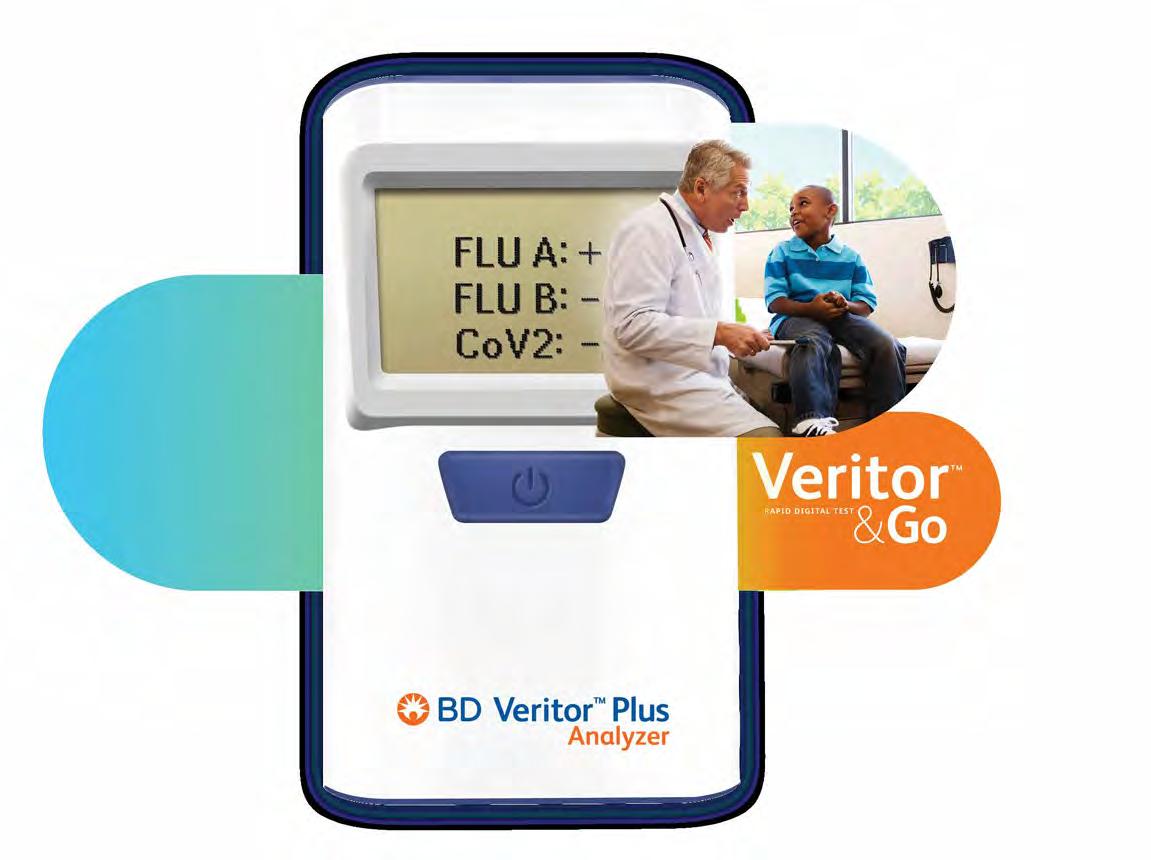
One system with multiple assays delivering reliable results for SARS-CoV-2,*
Flu B, RSV, and Group A Strep within 15 minutes at the point-of-care.
 By Jenna Hughes
By Jenna Hughes
Staying up to date with both primary healthcare and dental appointments is essential to maintain an individual’s overall health and well-being. Patients who forgo proper care may delay the diagnosis of chronic illnesses which can lead to a worsening of symptoms. A new approach to healthcare, with the goal of treating patients from a whole-body wellness perspective, integrates primary health and oral health care under the same roof.
research going into it, I’m not aware of any other systems in the country that have really started to integrate dental care with primary medical care. That’s why it is so exciting for this partnership to be taking place,” said Dr. Adam Solomon, chief medical officer for MemorialCare Medical Group.
MemorialCare works to make access to high-quality care easier and more affordable with four hospitals, two medical groups, primary care sites, imaging centers, surgical centers, and more.
Health systems have begun to recognize the importance of dental and primary care integration, such as MemorialCare, a nonprofit integrated health system in Southern California. In December 2022, MemorialCare and Pacific Dental Services (PDS), a nationwide dental and medical support organization, entered into a joint venture to open several co-located offices
in the coming years. The partnership brings physicians and dentists together in the same building with access to the same EHR, and with a shared goal of improving patient outcomes, according to a press release from both organizations.
“The connection between oral health and physical health has been well recognized for at least 20 years now. Despite the fair amount of
“Over the coming years, several co-located practices with PDS-supported dental offices and MemorialCare Medical Group health centers will open throughout Orange and Los Angeles counties in California,” said Dr. Solomon. “To see the partnership go from an idea to an actuality and have the first office location opening soon is really exciting.”
In July, the partners unveiled the site of their first integrated practice scheduled to open in fall 2023 in Irvine, California.
This collaboration between two entities sharing the same electronic health records (EHR) system set
























a new precedent in collaborative healthcare, allowing both dentists and physicians to view both a patient’s oral health and primary healthcare information. Through the Epic EHR, dentists and primary health providers can seamlessly view patient data including past visits and procedures, lab results, and prescriptions. Records provide a comprehensive picture of an individual’s health to whichever provider they are visiting. Shared medical and dental records will allow patients to have access unlike ever before to convenient primary health and oral care in one convenient system.
From an early stage, dental and medical care services have been kept distinct and separate from each other in their practice, service delivery, and insurance coverage. Dentists and primary care physicians have vastly different medical specializations and schooling requirements, and the divergent paths of study created a separation early in history between the disciplines.
According to the American Medical Association in a 2016 article on Overcoming the Historical Separation between Oral and General Health Care, the separation between
health for a long time and yet others haven’t brought these fields together,” said Dr. Solomon. “Sometimes it takes somebody being the first to put their foot forward for others to realize that they could be doing this, too. Integrating the disciplines will enable us to prove that treating both of those sides as one can lead to better outcomes for patients.”
The integration of oral health and primary healthcare holds the key to affordable and accessible healthcare for patients, according to a 2019 National Library of Medicine study on the Integration of Oral Health into Primary Care.
“By utilizing the Epic electronic health record system, both organizations can access shared medical and dental information, enabling better collaboration and informed decision-making in patient care,” said Stephen E. Thorne IV, Founder and CEO, Pacific Dental Services. “The interoperability of Epic allows for the closure of care gaps and early intervention, ultimately leading to reduced healthcare treatment costs. This partnership exemplifies how healthcare systems can work together to provide more comprehensive and patient-centered care.”
dental care and medical care is detrimental to underserved groups. It stated, “The notion of dentistry as a field separate from medicine is a historical phenomenon that has been reinforced through legislation, education, and service delivery. This division places an undue burden of dental disease on the most vulnerable Americans who face barriers to accessing dental care.”

Decades of clinical research have suggested that oral health is a critical component to overall health.
“It’s been known there’s a connection between dental and physical
The MemorialCare and PDS partnership comes at a time when healthcare organizations are shifting to focus on whole-person wellness that aims to improve overall patient outcomes. The partnership will support MemorialCare’s mission of providing easily accessible, highquality care along with PDS’ dedication to dental-medical integration to improve health outcomes while reducing annual healthcare costs and avoidable hospitalizations.
“This integration of medical and dental care prioritizes patients, shifting from a clinician-centric past to empowering both providers and patients through technology-driven data aggregation in the EHR for personalized care,” according to Thorne. “The coordination between medical and dental teams enables a holistic approach to patient care, addressing all aspects of their health.”
MemorialCare and PDS’ shared goals will drive collaboration within the healthcare industry.


With the same great protection you get from a Wolf barrier, this model features the ability to position the clear lead at any level between 45.25” and 74” for the ultimate in patient and operational visibility. It’s great for dozens of applications.
Best of all, the internal counter balance mechanism makes it easy to lift or lower…it requires minimal

• Overall width: 30.5”
• Opaque portion of the shield has .8mm lead equivalent protection

• Clear panel provides .5mm lead equivalent protection


• 25” legs with casters provide strength, durability and easy transport within the clinic

• The perfect right size solution for any environment: OR, ER, CT, X-ray, Urology, Pain Management, and Surgical Centers

• When lowered allows rapid transport to any location in hospital or clinic and easy-to-store
56610Product Weight: 176 lbs
Mobile Adjustable Height Lead Acrylic Window Barrier By Pete Mercer
By Pete Mercer
As more healthcare industry payment models shift from fee-for-service to a value-based approach that rewards clinical excellence, health systems have a unique opportunity to make changes within their own organizations to meet those shifts head-on.
In anticipation of these changes, ChristianaCare recently launched a new clinically integrated network called the ChristianaCare Clinical Alliance. A press release announcing the launch described it as a “formal partnership among clinicians who work to deliver well-coordinated, evidence-based care to improve quality, efficiency and health outcomes.”
This network is intended to meet the challenges of today’s complex and fragmented healthcare delivery system. When physicians partner with the ChristianaCare Clinical Alliance, they are supported and resourced by ChristianaCare, a nationally ranked health system based in Delaware.
Christine Donohue-Henry, M.D., MBA, chief population health officer at ChristianaCare, said in a press release, “The launch of the ChristianaCare Clinical Alliance marks an exciting new phase in this journey, and we look forward to partnering with clinicians and health care organizations throughout Delaware to be increasingly more successful in helping people achieve optimal health.”
A clinically integrated network is an arrangement where hospitals and
independent providers with similar goals and visions share performance improvement, quality, efficiency, and value goals that result in improved quality across the board and coordinated care at a lower cost. The clinically
integrated network is more of a distinct and singular entity, or the specific organizing structure that providers join when they form an ACO.
These networks serve a critical function in the care continuum,
working together to create better cost options for medical care. Members of these networks are provided with tools, analytic insights, efficiencies and economies of scale to help them deliver better outcomes for patients, while enabling smaller practices to participate in value-based payment arrangements with payors that might not be available otherwise.
Networks like this can provide a unique turning point for healthcare providers in a dynamic and constantly changing environment. As expectations for healthcare continue to change and technological advancements continue to emerge, providers need to be prepared to shift with the changing current. The ChristianaCare Clinical Alliance is an attempt to meet that shift head on.
“The health care industry is changing rapidly as payment models shift from fee-for-service to value-based models that reward excellent clinical outcomes – often referred to as population health. ChristianaCare has been preparing for these changes over decades. We have made investments in the infrastructure and expertise to be successful in this new environment,” Dr. Donohue-Henry said.
According to the release, participants in the ChristianaCare Clinical Alliance will be able to access value-based care arrangements with payors that will provide financial rewards and incentives for improving quality of care and reducing utilization. Additionally, members will have access to tools like ChristianaCare’s CareVio, a robust information technology platform that harnesses real-time health data from all available sources.
CareVio offers members of the Clinical Alliance an IT system that
captures and analyzes volumes of clinical and claims data to support clinical decision making and a support system that will help to address health equity issues amongst the patient base. There is also a team of healthcare professionals who are available to address clinical, behavioral, and social care needs that patients are experiencing.
Using collected patient data, members will also have access to a streamlined workflow, allowing them to optimize patient care and improve practice efficiency. The network will provide expert support for quality, reporting, and practice optimization.
right infrastructure in place, these networks can collect, organize, analyze, and stratify data to share critical insights with other providers in the network, which could include gaps in patient care, coding opportunities, or alerts regarding transitions of care.
As the healthcare industry continues to rely on things like data and technology, networks like the ChristianaCare Clinical Alliance have the unique opportunity to improve and prioritize the value of patient care over the volume of patients they see. With a valuebased care approach, physicians can encourage a network-wide, team
That data allows physicians to provide higher-quality, efficient care from a network of physicians that are working together to follow consistent clinical programs and protocols. In addition to including primary care physicians, the ChristianaCare Clinical Alliance will include clinicians from the healthcare continuum.
In addition to the improved quality of patient care, there are many benefits to a clinically integrated network. Because data is such a significant pillar for this kind of organizational arrangement, clinically integrated networks can build comprehensive datasets for patients for better population health management. With the
approach to patient care that elevates the entire experience.
Tony Reed, vice president of population health operations at ChristianaCare said in a news release, “We have a rich track record of ensuring that our patients remain at the center of all that we do. By developing an innovative infrastructure within our clinically integrated network, we are able to deliver the best outcomes to each patient we serve. Our clinically integrated network touches nearly every component of the care continuum including primary care, specialty care, behavioral health, hospitals, postacute care and community organizations which help address the social determinants of health.”
Using collected patient data, members will also have access to a streamlined workflow, allowing them to optimize patient care and improve practice efficiency. The network will provide expert support for quality, reporting, and practice optimization.
The primary care market is seeing consolidation like never before. A myriad of organizations are acquiring and investing in healthcare providers in response to changing patient demographics and preferences.

Some you have no doubt heard of – retailers like Amazon, CVS Health, Walgreens, and Walmart, or payors such United Health Group. Others, like private equity groups, you may not be as familiar with. But all these entities
are at the forefront of partnerships permeating the primary care landscape today. Redefining the market share is a shift from fee-for-service to fee-for-value reimbursement models, physician shortages, consumerism and digital disruption.
The IDN Directory defines these entities as Commercial Healthcare Providers (CHPs), organizations formed to address patient populations outside the traditional Hospital and Health System network. CHPs have formed as a result of the shift from fee-for-service to fee-forvalue reimbursement models, physician shortages, consumerism and digital disruption.
CHPs are categorized into four types of organizations:
Payor Affiliated CHPs.
Examples include UnitedHealthcare, Optum and Humana, CenterWell
Retail Affiliated CHPs.
Examples include CVS Health, Walgreens, Walmart and Amazon
Senior Focused CHPs.
Examples include Oak Street Health, ArchWell Health and CareMax
Networked (Enablers) CHPs.
Examples include Aledade, Agilon and Privia.
Repertoire Magazine , The Journal of Healthcare Contracting , and the IDN Directory will be covering all aspects of this changing market in 2023 and beyond.

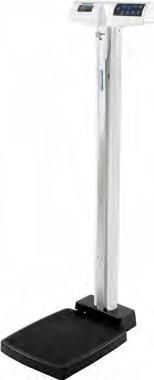


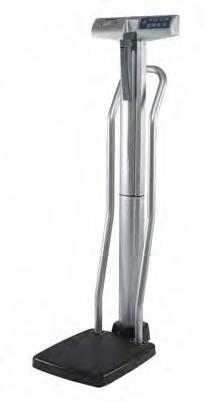

Expansion into several U.S. healthcare market segments signifies a desire to meet patients where they are.
CVS Health has had a busy 2023. Consider:
In January 2023, the organization announced it helped to lead a $375 million funding round for Monogram Health, a specialty provider of in-home and virtual care for polychronic conditions like chronic kidney and renal disease.
Also in January 2023, CVS Health partnered with startup
Carbon Health to pilot its primary and urgent care clinic model in CVS stores; and led a $100 million investment to speed Carbon Health’s expansion into new markets.
In March 2023, CVS Health scooped up technology company Signify Health for $8 billion.
And in May, CVS Health announced it had officially acquired seniorfocused CHP Oak Street Health, which has over 100 primary care doctor’s offices across 25 states and expects 300 locations by 2026, for $10.6 billion. Oak Street Health operates as a multi-payor primary care provider as part of CVS Health.
As these moves demonstrate, retail CHPs like CVS Health are focused on meeting patients where they are with in-home, in-store and virtual care services as well as in primary care offices. This corporatization of primary care is expected to only be the first wave. Bain & Company predicts that 30% of U.S. primary care will be owned by these non-traditional players by 2030. These population-specific models will grow nationally in an effort to mitigate administrative complexity for clinicians. Bain & Company predicts 15% of the market will be owned by payors and payor-owned services, while 5% to 10% of the market will be owned by retailers.
Meanwhile, virtual health is being embraced by younger, healthier patients and is anticipated to ascend to 20% market penetration by 2030. And while fee-for-service is still

predicted to be the largest model, alternative models are forecasted to take 15% to 20% of its market share.
Startup Carbon Health recently partnered with CVS Health to pilot its primary and urgent care clinic model in CVS stores. This led to a $100 million investment in Carbon Health’s expansion to new markets. Carbon Health has 125 physical clinics in 13 states and provides care for over 1 million patients.
CVS operates over 9,000 retail locations in the U.S. and will leverage Carbon Health’s model in its stores. This is just the next step in healthcare for CVS Health as it owns health insurer Aetna and pharmacy benefits manager Caremark, and it acquired technology CHP Signify Health and senior-focused CHP Oak Street Health.
Healthcare is a fragmented system in the U.S. and the primary care market plays an invaluable role in coordination. In today’s changing landscape for primary care, these non-traditional investors could catapult healthcare innovation that touches all Americans, including underserved and diverse populations.
For a deeper dive into CVS Health’s organization and footprint, visit The IDN Directory website at www.idndirectory.com
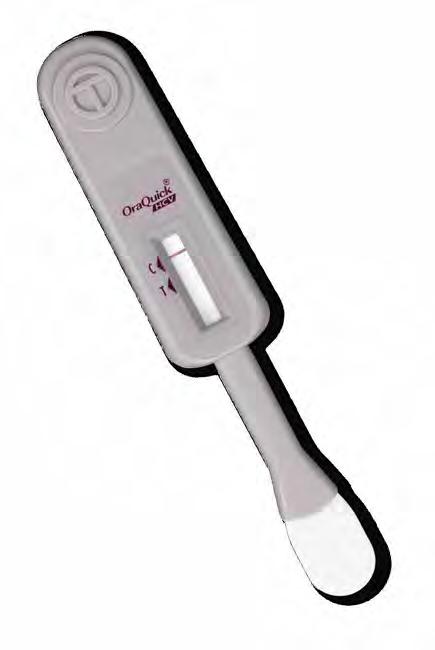


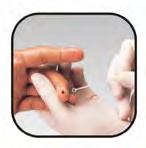
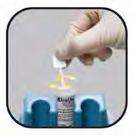
Detection is the first step to prevention, and one of the best ways to diagnose and help stop the spread of HIV and HCV is with OraQuick®.
The OraQuick ADVANCE® Rapid HIV-1/2 Antibody Test is an HIV test that offers several specimen types, including oral fluid, fingerstick whole blood, venipuncture whole blood (all of which are CLIA waived) and plasma.


The OraQuick® HCV Rapid Antibody Test is the only CLIA-waived point-of-care hepatitis C test on the market today, detecting HCV antibodies in fingerstick and venipuncture whole blood.
When utilized together, both tests form the OraQuick rapid point-of-care platform that allows clinicians to batch tests and optimize each patient visit.
1 fingerstick 2 results
ü Results in 20 minutes
Clinically proven performance
Easy 3-step process
Reduces indirect cost and improves turnaround time

How
By Graham Garrison and Daniel BeairdNewsweek’s World’s Best Specialized Hospitals 2023 ranked Cleveland Clinic No. 1 in the world for cardiac surgery and cardiology and among the top hospitals in the world for specialized care. It’s the second consecutive year Cleveland Clinic was ranked No. 1 for cardiac surgery. Newsweek’s rankings, according to the weekly news magazine, help those in need of care “to know which hospitals or state-of-the-art facilities have the most accomplished physicians and diagnosticians, and offer the highest level of care.”

Brian Jones is the senior director of the clinical sourcing team and physician preference items (PPI) for Cleveland Clinic. His team is tasked to be the subject matter experts within those specialized areas and to lead all initiatives and manage contracts for them. After witnessing some of the challenges surrounding PPE during the pandemic, Cleveland Clinic segmented its teams into the PPI side and the commodity side. Jones leads a director of capital and a director of ORs, and he’s also the director of the heart, vascular anesthesia and respiratory teams on the PPI side.
“When a request comes in from a physician, supply chain takes that work and that new product, and does all of the comparisons,” Jones said. “We identify what’s currently being utilized and if it’s a brand-new procedure, we identify if there’s reimbursement and get all of those details. We package that for our clinical leadership review and that goes to the service line leaders, administrators and budget owners so we can look at all of those inputs.”
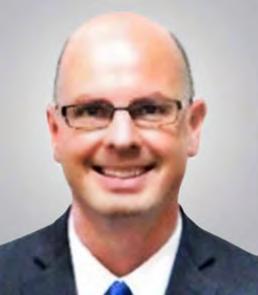
The physician is brought in for a presentation to walk through the strategy for the device’s utilization. At that time, it’s either approved for a three- to sixmonth trial to measure outcomes or it’s approved for permanent use with guardrails and guidelines associated with the type of patient for use and the data used for value measures. Or the device could be denied or approved for permanent use.
“In each of our service lines, we have established committees,” Jones said. “So, in GI, endoscopy and endovascular, for example, we have committees that
those requests flow through. So, it gets to the appropriates users who truly understand the devices and they’re the ones making the decisions.”
Jones’ team sits on about 15 committees to help facilitate these discussions. He says the support from the top – at the institute chair level – is the key to success at Cleveland Clinic with specialized care areas. That support gives them the confidence to see projects through and to speak up at staff meetings.
“Good, clear dialogue and everyone respecting each other’s opinions and relying on the facts and the data in front of them has been successful for cost savings and engagement,” he said.
Jones is excited about the work being done within Cleveland Clinic’s Sydell and Arnold Miller Family Heart, Vascular & Thoracic Institute because it’s new and different.
“It’s not just the project work of which supplier are we going to award what, but it’s within a portfolio of how we reduce cost within a type of procedure, without compromising the quality of patient care” he said. “It’s identifying cost per case by surgeon on similar procedures and what are the outliers. That’s helping drive some of the initiatives around waste management, utilization and appropriate use criteria.”
The heart, vascular and thoracic team has identified key champions this year and Jones notes the level of engagement and excitement among the staff is appealing to work with. “I put out the monthly numbers for them and they’re enjoying it,” he said. “It’s a bit different. They still have their day jobs but they like the collaboration and working through some of these opportunities.”
A clinical leader will identify two or more individuals within their clinical institute to collaborate with supply chain to help build out teams and opportunities to vet products. The group meets regularly to review standardization opportunities, appropriate use criteria, guidelines, waste reduction and cost reduction, while prioritizing patient safety and quality care.
Patients travel from all 50 states and 136 countries to the Heart, Vascular & Thoracic Institute for expert care and exceptional outcomes. It’s home to many of the world’s best physicians practicing cardiovascular medicine and surgery. In 2021, Cleveland Clinic cared for 786,871 patients at its main campus in Cleveland, Ohio. It has received the highest overall composite score star rating – 3 of 3 stars, a rating that reflects better than expected outcomes in each category – in all Society of Thoracic Surgeons (STS) cardiac and thoracic star rated categories:
Isolated coronary artery bypass (CAB)
Isolated aortic valve replacement (AVR)
Aortic valve replacement with coronary artery bypass (AVR+CAB)
Mitral valve repair and replacement (MVRR+CAB)
Transcatheter aortic valve replacement (TAVR)
Lobectomy for lung cancer
Pulmonary for lung cancer
Esophagectomy for esophageal cancer
Surgical outcomes are grouped by disease umbrella. This brings together the teams that focus on specific disease processes led by an umbrella director. The structure supports the investigation of these disease processes and the tracking of outcomes of innovations in care delivery.
“We have five supply chain medical directors, and they carve out a portion of their time to assist in supply chain challenges,” Jones said. “If we have a disruption or need to identify an alternative, the first person we go to
“In each of our service lines, we have established committees. So, in GI, endoscopy and endovascular, for example, we have committees that those requests flow through.”
– Brian Jones, senior director of the clinical sourcing team and PPI, Cleveland Clinic
“If we have a disruption or need to identify an alternative, the first person we go to is our supply chain medical director to start vetting it and understanding if it’s accurate and appropriate.”
is our supply chain medical director to start vetting it and understanding if it’s accurate and appropriate.”
























Jones says they vet many of their presentations around standardization or cost opportunity through the supply chain medical directors before large committee meetings. “They play a very important role in bridging the supply chain side to the clinical side,” he said.










Each month, Jones’ team puts together a savings tracker. It covers the average utilization of a device and the appropriate use criteria that is built in.





















“That’s level setting for every meeting we have with our physicians,” he said. “No decisions made by the group are to ever impact the quality of care of our patients. That gives them the breathing room to say, this isn’t just about reducing costs, but it’s maintaining the highest level of quality and finding areas of opportunity where we didn’t have the awareness of price variations. But now we do, and we can make informed decisions of what to utilize.”
Jones says the physicians want to be good stewards and it’s his team’s job to educate them on the differences in price, for example, if a supplier has three generations of devices.
“They don’t know that, so it’s our job to educate and create awareness in these committees and groups in order to identify when it’s appropriate to use the most expensive widget,” he said. “That’s what we’re working on and tracking savings that way.”
Clinical leaders at Cleveland Clinic educate the supply chain side too. “It’s incredible to hear them go around the table discussing different devices. A lot of people would like to hear that. They are amazing surgeons and educators who are always willing to work with us and teach us as well,” Jones said.
The clinical side is very busy in their practices and the biggest challenge for the supply chain side is just finding time to work with them. It’s about being available at 6:30 a.m. before their OR times or when they’re done at 5 p.m. or 6 p.m. Jones’ team stresses being ready when the clinical side is available.
“It’s ensuring that we’re ready to go, we have all of the information and that it’s good, clean, accurate, understandable and actionable, and we can share it in a short amount of time,” he said. “If we fail there, it’s going to be much more difficult to get that access again. So, let’s be prepared.”
Editor’s note: The following interview was part of The Journal of Healthcare’s Contracting Ten People to Watch feature in the July/August 2023 issue. JHC is a sister publication of Repertoire.

Brad Forth is the system vice president of sourcing and vendor management at SSM Health, which provides health care to communities across Illinois, Missouri, Oklahoma and Wisconsin. The IDN has a centralized sourcing contracting function, and supply chain is responsible for all non-FTE labor expense for the organization. Forth’s team covers everything from traditional med-surg to implant, capital medical equipment, lab, pharmacy, IT, and purchased services.
What are some stories of recent supply chain wins/successful projects you can share?
I’ve been here for four years, and in that time, we’ve driven a lot of change through the organization to establish a functional foundation that is enabling our successes. Historically, we had a centralized sourcing and contracting “functionish.” We would put together system agreements, but Oklahoma may have a carve-out rebate, or Wisconsin may have negotiated a local agreement with that same supplier.
When you looked outside of the traditional supply chain space, the team was selective on what they were supporting. They would support some purchased services, or bigger categories, but they hadn’t holistically managed that spend. Overall, there were no processes or controls to really manage our spend or align it to defined standards.
We have changed that significantly. We are now contracting centrally. We’ve built a team filled with amazing talent. The business rules and processes that we implemented to centralize our function have really enabled us to intentionally engage
our end-users to collaboratively manage our spend and minimize unnecessary variation.
Getting the foundational pieces operational was extremely important. They enable the successes that we’ve been able to have.
If you look historically at this function, it generated anywhere between $25 to $30 million in annualized value for the organization. Since we’ve implemented our changes, the last two years, we’ve delivered over $100 million each year. So, 4x growth in the value that we’re delivering.
Whereas historically, the team would maybe do 500 contracts a year and the annualized spend under those was $300 – $400 million, last year, we did close to 2,000 contracts, and the annualized spend flowing through those was $1.5 billion. So, we’re touching a lot more and really managing more spend, which is enabling us to partner with our clinicians, physicians, and business owners to generate a lot of wins.
What has sourcing been like this year compared to the last few?
Sourcing hasn’t changed all that much, but the challenges we’re facing are different. You have the constants of aligning with our clinical programs or our service lines to support their defined standards of care: identifying key attributes in the products or services that they need, verifying clinical acceptability, and working to
put together a strategy that drives competitive friction to determine what the market will bear.
The new challenges that we are facing are around supply assurance and mitigating supplier reactions, or predictions, to inflation. Historically suppliers wouldn’t come midterm looking for price increases or insist on building guaranteed yearover-year price increases into agreements. They are now. The team has gotten really comfortable with those conversations and deploying mitigating strategies. The team is also now spending an inordinate amount of time sourcing clinically acceptable subs necessitated by all of the backorders. The team is working to balance these headwinds with our strategic efforts, but necessary to support the immediate needs of our caregivers.
Besides value, what are some other ways you measure success for your team?
We do maintain qualitative type metrics beyond value. We have metrics around productivity, number of contracting actions per FTE, number of new requests received and completed.
But I don’t really consider any of those a measure of success. One of the key ways I measure success is through our retention rate and team engagement. If we have a motivated workforce that’s excited to be here, we’re delivering on value, and we have low turnover, that tells me we’re doing something right. I sit back and watch how the team engages with each other, how they engage with our end users, how our end users engage with them, to get a sense of how things are going. If I can see positive, respectful, strategic engagements, I’m super happy and view that as success.
In your experience, what are some keys to a successful partnership between suppliers and providers?
At the core, the supplier needs to have a true desire to support us in caring for the communities that we’re blessed to serve.
There has to be a focus on patient outcomes, care for the community or efforts around population health. Then deploying a solutionsbased approach to align and truly support us.
I recognize our supplier’s motivation is to sell. I don’t begrudge them for that. That is their job, and that’s what they are tasked to do, but that can’t be their North Star. If it is, that’s where relationships start to get sideways.
‘ Historically suppliers wouldn’t come midterm looking for price increases or insist on building guaranteed year-over-year price increases into agreements.’
‘ If we have a motivated workforce that’s excited to be here, we’re delivering on value, and we have low turnover, that tells me we’re doing something right.’
Michael Schoendorf tied the knot with his wife, Keri Lynn, in September 2022. Freshly married, he was getting used to wearing his new platinum wedding band full-time. One day in June 2023, though, on the way home after a busy end-of-the-month workday shipping out deliveries, he looked down at his hand in surprise to realize he’d misplaced his wedding ring.

Schoendorf, IT Support Specialist at Parkell, works with all aspects of technology for the company located on Long Island, New York which manufactures dental products, devices, and materials. In his position, the end of the month means a rush to reach sales goals, and his job is all hands-on-deck in the shipping department to make sure as much product is moved as possible.
During the end of the month rush, Schoendorf was preparing to fulfill two important orders. He was working quickly to make sure that he could finish up the last order by the end of the day and be on time to pick up his wife to take her to the airport for a trip she was taking to visit her mother.
“It was a mad dash to the finish line that day, coupled with the fact that my wife needed a ride to the airport,” Schoendorf recalls. “I was rushing to make sure I could finish up that last order, pick her up, and bring her to the airport. It was on my way home after dropping her off that I realized my ring was missing. I looked down at my hand and nothing was there. I got home and

It’s CLIA-waived and it provides highly accurate results in 5 minutes at the point of care, leading to improved quality metrics for your customers—and better outcomes for patients.

proceeded to turn around and return to the airport because I thought it had slipped off there.”
Schoendorf spoke to the security guard at the airport, paced around where he dropped his wife off looking for the ring, searched his entire house, and even returned to work, hoping the ring might have been left there.
“I thought there was a good chance that the ring may have slipped off when I was packaging the boxes. When I came back to work on the following Monday, I reached out to Henry Schein to see if we could figure out where last week’s shipment was going to end up and if someone on the other end could check through the boxes to search for a ring,” said Schoendorf.
When the boxes from the Parkell order arrived at Henry Schein, Toni Leck, Receiving Supervisor at Henry Schein’s Denver, Pennsylvania distribution center, received an email from the buyer asking if there was any chance they could look through the order for the missing ring.

Five boxes were unloaded that day from Parkell, and Leck was careful to go through each piece of packaging material in the box to make sure the ring didn’t slip through the cracks. With no luck on the first day, Leck knew there was one more box expected from Parkell, and held on to hope.
“I really wanted to find this ring. On the second day, there were two pieces of paper left in the final box,” said Leck. “I looked down and there’s a silver ring in this box. I did a dance. I was singing on the dock. We all threw a party. We were all jumping around because everybody knew I was trying to find this ring.”
Leck sent an email back that the misplaced ring had been located by Henry Schein’s team. Henry Schein, taking every precaution, packaged the ring, and Schoendorf received the package with the found ring by next day shipment.
All parties involved were elated that the story had a happy ending.
“Our marriage was so fresh and new at the time and more
meaning than just a ring. My wife had a good feeling about finding the ring and reassured me that it’d turn up,” said Schoendorf. “It was an awesome sense of team comradery. Toni and everyone on the Henry Schein team came together to help me and make sure that all the boxes got checked as well as they could be, and I really appreciate that.”
“ I r eally wanted to find this ring. On the second day, there were two pieces of paper left in the final box. I looked down and there’s a silver ring in this box. I did a dance. I was singing on the dock.”


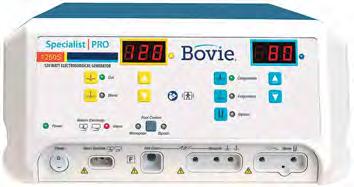
The second annual HIDA Preparedness Summit convened a record number of federal, state, and local partners from key government agencies with leaders in the healthcare distribution industry to discuss efforts to build greater resilience into the medical supply chain.
HIDA brought together industry executives and federal partners as well as state and local public health representatives. Federal leaders from the various program offices at the Administration for Strategic Preparedness & Response (ASPR) attended – including the Strategic National Stockpile, the Industrial Base Management & Supply Chain, H-CORE, Office of Preparedness and PHEMCE.
Five key themes emerged from the summit.
Renew The Commitment To Public/ Private Partnerships. The commercial market supply chain leaders and public partners from federal, state, and local public health agree partnerships are the only way for effective preparedness planning and response. Neither can do it alone. Both complement the other’s strengths.
Preserve Institutional Memory. Private sector partners agree that it is their responsibility as supply chain leaders to ensure that supply chain stakeholders, policymakers, and the public preserve institutional memory when it comes to future response efforts. Companies and public sector partners need to focus on transmitting these lessons learned to the next generation of leaders.
Data Is Critical. Informed decision making utilizing impactful data is important to preparedness planning and response. Such data has multiple uses. Data can detect supply chain disruptions, assist with demand planning, and allow public sector partners
to direct resources to where they are needed most.
Achieve Communication Consensus. Any communications effort during supply chain disruptions must contain multiple linkages between partners. These linkages should be made among trading partners within the commercial market, between the commercial market and government partner at the local, state and federal levels, as well as among government partners. Stakeholders should take into account end users such as healthcare providers, retail settings, and the public.
Industrial Base. A strong industrial base is a key component of a strategic blend of global, near shored, and
By Linda Rouse O’Neill, Senior Vice President for Supply Chain Policy, HIDA
domestic product sourcing. However, a domestic industrial base requires a thoughtful approach so it is sustainable long-term. Federal partners can pre-screen companies capable of pivoting to produce medical-grade products for future pandemics and share that list with distributors and other supply chain stakeholders.
HIDA continues to serve as the key link between private sector companies and public sector agencies. With each passing year, it becomes more important to codify the best practices and lessons learned from the COVID-19 pandemic. HIDA continues to broaden and deepen the relationships between the public and private sector to encourage an ongoing dialogue on pandemic preparedness.
Informed decision making utilizing impactful data is important to preparedness planning and response. Such data has multiple uses.

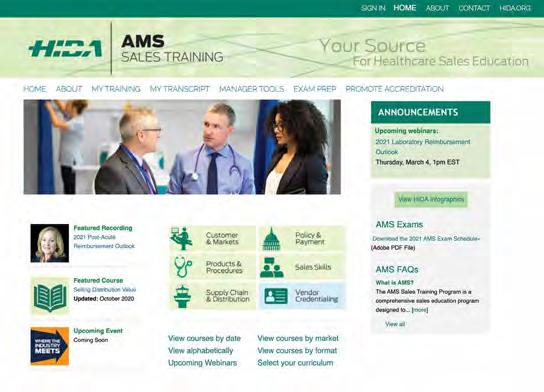
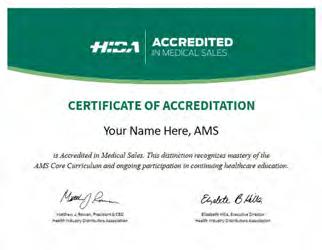
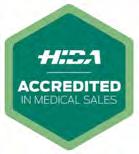
 By Jenna Hughes
By Jenna Hughes
Successful marketing campaigns entail influencing a consumer’s decision-making process. So, what causes us to make certain purchasing decisions over others as consumers? And how do different marketing tactics influence an individual’s decision-making process?
Understanding the answers to these important questions can help businesses create audience-targeted and effective marketing campaigns that better promote their products and services.
To help a company attract customers and encourage purchases, the following human behavior and psychology tactics should be considered when creating advertisements:
1. Emotional Marketing
Brands can foster trust by emotionally connecting with their customer base. According to Forbes on The Psychology Behind Marketing, brands that evoke emotion in their ads create a personal connection with customers. Established relationships with customers can eventually lead to brand commitment and automatic purchasing decisions.
2. Photo Recognition
The human brain can process images and visuals faster than it can process writing. This is an advantage for marketers, as we live in a highly visual world with technology. An advertisement with engaging visuals has the power to gain the attention of customers
and push them to do further research into the details of a brand.
3. Call-To-Action Technique
Brands that utilize call-to-action marketing tactics prompt a more immediate response from consumers. Phrasing in an advertisement that calls for consumer action encourages motivation to act toward making a purchasing decision. Examples include requests to subscribe to a company’s newsletter or encouraging viewers in an advertisement to sign up for a company’s service.
4. Color Psychology
Color psychology is the concept that color can evoke emotion, inspire reactions, and change modes of thinking, according to the London Image Institute. For example, red is associated with strong emotion and attracts a viewer’s attention.
5. Framing
Information can be phrased in a certain way to invoke a positive consumer response. For example, when phrasing and advertisement with “Option A costs $50” or “Option B is on sale for 50% off the price of $100,” a marketer using framing would choose Option B, because the consumer would perceive it as receiving a discount.
Share Moving Media has been creating content for the medical manufacturing industry for over 30 years. Through the publication of the reputable Repertoire and Journal of Healthcare Contracting Magazines, SMM is experienced creating content and advertisements that stand out in the surgical sales industry. We can assist your company with creating print and digital content that captures the attention of your company’s audience.






Preliminary treatment options to address long COVID symptoms were recently unveiled through the NIH’s RECOVER program.
The National Institutes of Health (NIH) recently launched a long COVID clinical trial through the RECOVER Initiative. Open enrollment for the second phase of clinical trials began on July 31, 2023. The trials will evaluate up to four potential treatment methods for long COVID. Long COVID is the continuation of disease symptoms that follow a SARS-CoV-2 infection, the virus that causes COVID-19, according to the NIH.
Methods of treatment for long COVID include drugs, biologics, medical devices, and other therapies. Researchers developed trials with feedback from patients, experts in the symptom areas and treatment methods, and reviewed hundreds of treatment proposals.
The RECOVER program is part of the NIH’s Researching COVID to Enhance Recovery (RECOVER) Initiative. The trials were informed by the program’s research studies conducted over the past 2 years. Trials focused on several symptoms described as the most difficult to recover from by long COVID patients.
RECOVER is a nationwide research program designed to understand, prevent, and treat long COVID. The beginning stage of the initiative launched an observational, multi-site study that examined and followed patients throughout their
experience with long COVID. The research aimed to understand why some individuals develop long-term symptoms while others recover.
“Hundreds of RECOVER investigators and research participants are working hard to uncover the biologic causes of long COVID. The condition affects nearly all body systems and presents with more than 200 symptoms,” said Walter J. Koroshetz, M.D., director of the NIH’s National Institute of Neurological Disorders and Stroke, and co-lead of the RECOVER Initiative.
RECOVER has partnered with NIH to design and conduct trials that have the potential to provide long COVID patients with relief sooner than individual studies. The trials that launched in July 2023 will focus on viral persistence and cognitive dysfunction through an adaptive research design called “platform protocols.”
The platform protocols include RECOVER-VITAL (including treatments that target disease persistence), RECOVER-NEURO (which examines accessible interventions for COVID related cognitive dysfunction), RECOVER-SLEEP (that monitors changes in sleep patterns or ability to sleep after infection), RECOVERAUTONOMIC (studying autonomic nervous system complications from the disease), and a fifth platform protocol that will focus on exercise intolerance and fatigue.
“Clinical trials to test effective treatments and interventions are a core component of the whole-of-government response to long COVID,” said Adm. Rachel L. Levine, M.D., Assistant Secretary for Health, Department of Health and Human Services.
RECOVER aims to enroll a study population that is representative of communities most affected by long COVID. Studies will be inclusive, partnering with local communities to raise awareness about long COVID and offer individuals the opportunity to participate in trials.
Additional clinical trials to test at least seven more treatments are expected in the coming months. Trials will continue to enroll patients on a rolling basis. For people aged 18 and older who want to learn more about the trials should search “RECOVER” at the NIH site ClinicalTrials.gov to learn more and find enrollment sites across the United States.
The completion of the largest rooftop solar project in New York State was announced in July 2023 by Governor Kathy Hochul, according to a release, located on top of the distribution center owned by Medline Industries in Orange County.


The community solar project supports New York’s Climate Leadership and Community Protection Act’s goal of installing six gigawatts of distributed solar by 2025. The overall goal of Medline and New York State working together is to accelerate progress toward ten gigawatts of distributed solar by 2030. The current project on Medline’s roof will provide 7.2-megawatts of energy toward the future statewide goal.
The project, completed with more than 17,000 solar panels, aims to reduce energy costs for both Medline and residents of the Mid-Hudson region. It will generate 8.5 million kilowatt-hours (kWh) of clean power annually, which is enough to power over 1,600 homes. Carbon emissions will be reduced by nearly 6,000 metric tons annually as a result of the project, which is the equivalent of taking over 1,200 cars off the road, the release said.
According to Governor Hochul, “The completion of this project marks another major milestone in the Empire State and reflects a successful trend of private investment in community-centered projects that are now at the heart of our clean energy transition.”
The project was funded with nearly $5 million in private investment from the developer PowerFlex, which is a national provider of solar,
storage, and electric vehicle (EV) charging stations, now owned by Medline Industries.
According to PowerFlex CEO Raphael Declercq, “As the project developer, we are proud to have helped bring this record-breaking New York rooftop community solar project into reality. PowerFlex’s partnership with Medline over the years has enabled the installation of multiple solar projects across the country, and we commend their deep and ongoing commitment to sustainability.”
Medline’s distribution center opened in August 2022 and currently employs
more than 700 people in the medical supply industry. The distribution center will use 40% of the clean energy generated by the solar project and leave 60% available for nearly 600 residents.
“Medline is unwavering in its commitment to building an environmentally sustainable business by investing in green technologies. The installation of New York’s largest rooftop solar project at our Montgomery distribution center exemplifies our dedication to making healthcare more sustainable for providers and their patients in the state,” according to Francesca Oliver, Medline Vice President of Environmental, Social, and Governance (ESG).
Henry Schein is helping children around the world start the academic year off right through its “Back to School” program, a flagship initiative of Henry Schein Cares, the Company’s global corporate social responsibility program. Team Schein Members at 32 locations in the U.S., Canada, U.K., and Ireland are providing nearly 5,000 students with backpacks filled with school supplies and hygiene essentials, with more events to come this year in Italy and Spain. Since the program’s inception in 1998, the Company has helped more than 65,000 children return to the classroom equipped with the necessities for a successful school year.
On August 17, Henry Schein held its first in-person “Back to School” event at its worldwide headquarters in Melville, N.Y. since the pandemic. Approximately 400
pre-identified children and their families received backpacks, school supplies, and gift cards to purchase their choice of first-day-of-school outfits. The event also included a BBQ, games, music, crafts, and other activities, including an interactive science presentation. Additionally, the event featured a tent with free books donated by Team Schein Members and KPMG LLP –a U.S. audit, tax, and advisory firm – through its Family for Literacy program and partnership with nonprofit social enterprise First Book. One of several “Back to School” events being held around the world, the fun-filled evening provided participating children and families with an uplifting experience to kick off a successful school year.
Henry Schein partnered with 10 local social service organizations to pre-identify the participating children and their families for the Melville event: Bethany House; Espoir
Youth Program, Inc.; Family and Children’s Association; Family Service League; Hispanic Counseling Center; Nassau County Department of Social Services; The Raymar Children’s Fund; SCO Madonna Heights; WellLife Network; and YES Community Counseling Center.
Abbott and Bigfoot Biomedical announced a definitive agreement for Abbott to acquire Bigfoot, a leader in developing smart insulin management systems for people with diabetes.
Abbott and Bigfoot have worked together on connected diabetes solutions since 2017. Bigfoot developed Bigfoot Unity®, a smart insulin management system that features the first and only FDA-cleared connected insulin pen caps that use integrated continuous glucose monitoring (iCGM) data along with
All leaders are welcome! Open to women & men from all career levels – Aspiring Leaders to C-Suite Executives. Gain actionable takeaways through our PWH Leadership Insights (TED-style talks), empowering keynote speakers, engaging panel discussions & breakout sessions that cover a host of topics around pressing leadership issues.

 Adam Markel, Keynote Speaker, Bestselling Author, Workplace Expert & Resilience Researcher
Adam Markel, Keynote Speaker, Bestselling Author, Workplace Expert & Resilience Researcher


Are You Thriving or Merely Surviving? Build the resilience you need to power through challenges and become “Change Proof.” Often, resilience is associated with “rolling with the punches” and “bouncing back”. But what if, rather than simply getting back to baseline, you could aim higher and actually thrive in the midst of uncertainty? We all know that change is necessary, and yet few of us welcome it. Becoming change proof means coming to terms with the discomfort of change so we can truly embrace the future – for ourselves and our organizations.
As a leading international keynote speaker, Adam has inspired tens of thousands worldwide with his message of resilience as the competitive edge in today’s complex markets. Today he is motivating leaders and organizations to tap the power of resilience to thrive through the massive disruption we now face. His unique expertise is in combining practical business tactics with accelerated learning strategies to embrace change, encourage innovation and increase sales for people and organizations worldwide.
Member Non-Member
Early Bird $795 $895
Regular $895 $1,095
The 2024 PWH® Leadership Summit is headed to Louisville, Kentucky. A city that combines historic charm & innovation with authenticity & originality is the perfect venue to welcome industry leaders for a leadership experience like no other.
healthcare provider instructions to provide insulin dosing recommendations. The dosing recommendations are displayed on the pen cap’s digital screen to help people know how much insulin to take.
The Bigfoot Unity system exclusively works with Abbott’s worldleading FreeStyle Libre® technology and includes a customer smartphone app connected to a cloud-based online portal used by healthcare providers to support their patients, including through remote care. The system works with FreeStyle Libre 2 sensors and all major brands of both long-acting (basal) and rapidacting (bolus) disposable insulin pens offered in the United States. It’s indicated for use by people 12 years and older with diabetes who need multiple insulin injections a day.
Professional Scales, acquires
Bridge Healthcare USA
Pelstar LLC, the manufacturer of market-leading medical scales Health o meter Professional and McAuley Medical, Safe Patient Handling products, is thrilled to announce the expansion of its Safe Patient Handling portfolio. The company has successfully acquired Bridge Healthcare USA. Bridge Healthcare is renowned for its specialized Safe Patient Handling Products that effectively reduce and prevent injuries to healthcare workers during patient transfers and repositioning in various healthcare settings, including hospitals, long-term care facilities, and specialty clinics. Its featured products include Lateral Air Transfer and Repositioning Systems, Air Supplies, and Slide Sheets. With this acquisition, Pelstar LLC reaffirms its commitment to providing top-notch
healthcare solutions and further strengthens its position as a leader in the Safe Patient Handling market and improving the well-being of healthcare workers. For more information visit www.bridgehcusa.com or call 1-800-815-6615.
Respiratory season is unpredictable, making it difficult for healthcare professionals to plan for future testing needs. The COVID-19 pandemic and inconsistent flu seasons continue to present additional disease forecasting challenges.
Through the Reserved Inventory Program, Cardinal Health lab consultants are already working with healthcare professionals to identify how many of their preferred seasonal rapid respiratory products are needed for the unpredictable season.
An advanced planning model utilized by the program allows health organizations to be more prepared with on demand inventory of their preferred products, all season long. New this year, the premium, feebased option, 90 PLUS, provides a minimum of 90 days dating and enhanced inventory confidence on preferred respiratory products.
In a recent survey conducted by Cardinal Health, respondents reported fewer inventory constraints after participating in the Reserved Inventory Program. Program features such as local stocking and historic product utilization data help reduce inventory challenges and allows facilities to adequately prepare for case increases. The program helps ensure adequate stock of diagnostic testing inventory is available
and locally stocked, mitigating the effects of seasonal supply chain disruptions. This secured access to the products clinicians need, right when they’re needed, can make all the difference in providing the best care for patients.
Midmark has been recognized as one of the Healthiest Employers of Ohio at the National Wellness Institute’s Annual National Wellness Conference. The Healthiest Employers awards program recognizes people-first organizations taking a more proactive approach to employee health. Applicants are scored across six key categories: Culture and Leadership, Foundational Components, Strategic Planning, Communication and Marketing, Programming and Interventions and Reporting and Analytics.
As part of the company’s awardwinning wellness program, Midmark maintains an onsite wellness center staffed by a nurse and offers flu shots, mammograms, vascular and skin screenings, blood pressure checks and other wellness screenings throughout the year. The company also offers weekly onsite massage sessions, outdoor walking paths and fitness center spaces for group and individual workouts.
In addition to the Healthiest Employers recognition, Midmark also received a gold-level Healthy Worksite Award from the Healthy Business Council of Ohio (HBCO). This award recognizes Ohio employers who demonstrate a commitment to employee wellness through comprehensive worksite health promotion and wellness programs. This is the second year in a row that the company has been awarded a goldlevel ranking from the HBCO.
